Premium courses offered by Wray Castle Ltd are designed for professionals seeking advanced knowledge and skills in telecommunications and technology. These courses are tailored to provide in-depth, specialized training in specific areas such as 5G, LTE, IP, radio engineering, network virtualization, and critical communications like TETRA and PMR.
With a focus on delivering high-quality, industry-relevant content, premium courses are ideal for individuals looking to enhance their expertise and advance their careers in the rapidly evolving field of telecommunications. These courses are developed by industry experts with years of experience, ensuring that learners receive the most up-to-date and relevant information.
By enrolling in a premium course, participants can expect to gain a deep understanding of complex topics, explore advanced concepts, and develop practical skills that can be applied in real-world scenarios. The courses are delivered through a combination of live sessions, self-paced modules, interactive labs, and case studies, allowing learners to engage with the material in a variety of ways.
One of the key benefits of premium courses is the personalized support and guidance provided by experienced tutors. Learners have the opportunity to ask questions, seek clarification, and receive feedback on their progress, ensuring that they are able to fully grasp the material and apply it effectively in their work.
Upon successful completion of a premium course, participants will receive a digital badge certifying their achievement. This recognition can enhance their professional profile, demonstrate their expertise to employers, and open up new opportunities for career advancement.
Overall, premium courses offered by Wray Castle Ltd are a valuable investment for professionals looking to stay ahead in the fast-paced world of telecommunications and technology. With access to cutting-edge content, expert guidance, and industry recognition, learners can take their skills to the next level and achieve their career goals.
Premium Courses
-
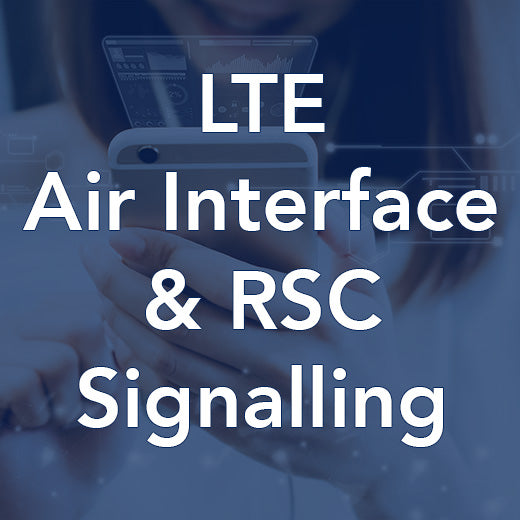
LTE Air Interface and RRC Signalling
Course Code: LT1405 Course Summary A detailed technical description of the air interface signalling protocols employed in LTE. This includes the layer 3 Radio Resource Control (RRC) and layer 2 Packet data Convergence Protocol (PDCP), Radio Link Control (RLC) and Medium Access Control (MAC) protocols. The set of messages and functions supported by each protocol is examined in detail. Who would benefit This course would benefit engineers involved with equipment design, operation, and optimization or monitoring of the LTE radio link. Prerequisites An engineering background with some knowledge of digital radio systems and general radio principles and techniques is assumed. A basic understanding of LTE and experience of 2G or 3G systems would be beneficial. Topic Areas Include RRC - functions and procedures LTE RRC identities and states RRC message structure and ASN.1 Overview of RRC message types System information messages Paging RRC connection management Intra-E-UTRAN and Inter-system Mobility RRC security Security mode command Measurement DL/UL information transfer PDCP control messages RoHC configuration and control RLC control messages, ARQ management and segmentation MAC control elements End-to-End air interface signalling procedure examples
POA: Private Course
-
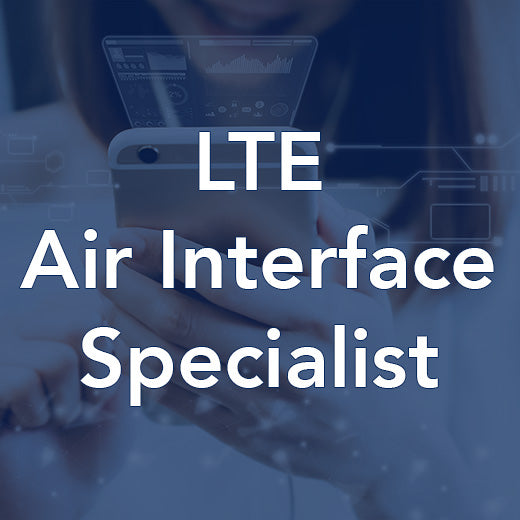
LTE Air Interface Specialist
Course Code: LT1302 Course Summary This course provides a deeper insight into the inner workings of the LTE air interface physical layer to meet the needs of air interface specialists. It offers an opportunity to look more deeply into topics such as OFDMA and SC-FDMA, specifically into the use of Fourier Transform methods and the construction and use of the Cyclic Prefix. The use of Zadoff-Chu sequences for some physical layer functions is also discussed, as are topics such as Reference Signals and the construction, administration and use of LTE physical channels. Who would benefit This course is designed for Radio Frequency (RF) engineers, radio planners, technical support staff and other specialists who have a need to look further into the LTE Air Interface than is possible with less specialised courses. Prerequisites A thorough understanding of the basic and more complex principles of the LTE Air Interface is essential and can be gained from attending Wray Castle’s ‘LTE Engineering Overview’ and ‘LTE Air Interface’ courses. Topic Areas Include OFDMA subcarrier orthogonality OFDMA fourier transform functions Physical signals and Zadoff-Chu modulation sequences SC-FDMA Downlink and Uplink physical carrier configuration Reference signal generation and functions Downlink physical channels: PBCH, PCFICH, PHICH, PDCCH Downlink concepts: REG, CCE, Aggregation Levels, PDCCH Search Spaces PUCCH operation PUCCH resources, regions, formats and operation Downlink Control Information (DCI) and Uplink Control Information (UCI) types and functions PRACH resources, formats, configurations and operation
POA: Private Course
-
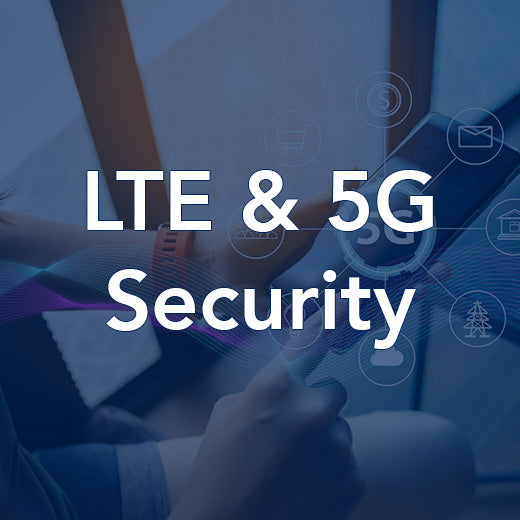
LTE and 5G Security
LTE and 5G systems are becoming increasingly essential in our daily lives, serving as the backbone for future communications and connected devices. As these technologies continue to evolve, the need for robust security measures becomes paramount. The LTE and 5G Security Training Course offered by Wray Castle provides a comprehensive overview of the security environment within LTE and 5G networks, covering key topics such as LTE Authentication and Key Agreement, security procedures, and 5G security architectures. Designed for engineers, managers, and other professionals looking to gain a technical understanding of LTE and 5G network security, this course delves into critical areas such as Access and Core Network security, 5G key derivation, and authentication procedures. Whether you are directly involved in the telecommunications industry or simply want to enhance your knowledge of cellular network security protocols, this course offers valuable insights into the evolving landscape of mobile security. By enrolling in this course, participants will gain a solid foundation in LTE and 5G security, equipping them with the knowledge and skills needed to navigate the complexities of modern mobile networks. Whether you are a seasoned telecom professional or new to the field, this training programme will provide you with the tools to stay ahead in an increasingly interconnected world. Who would benefit This course is designed for engineers, managers and other personnel who have a need to acquire a technical overview of the security environment employed within LTE and 5G networks. It will also be of benefit to those in the wider technical community who have a need to understand the security protocols employed by cellular networks. Prerequisites Attendance on, or equivalent knowledge, LTE Engineering or 5G Engineering would be useful. Alternatively, experience working in this area of telecoms. Topic Areas Include LTE Security Architecture Authentication and Key Agreement Evolution to 5G 5G Non-Standalone Mode Security 5G Standalone Mode Security Also available as a Self-Study Online Learning Programme, learn more.
POA: Private Course
-
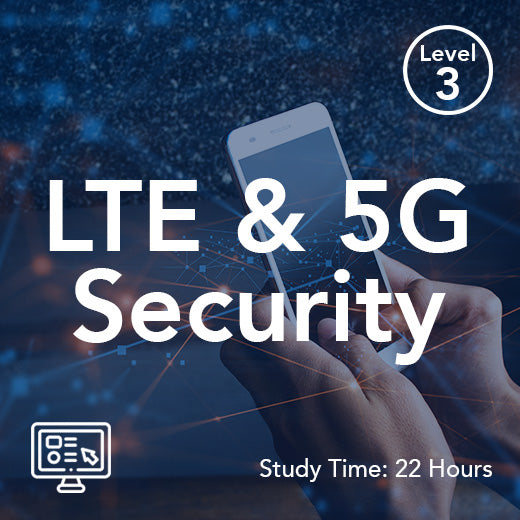
LTE and 5G Security (On-Demand)
LTE and 5G systems play a crucial role in our modern communication landscape, with the potential to revolutionize how we connect and interact with our devices. As these technologies become more prevalent, ensuring the security of our data and privacy becomes paramount. The LTE and 5G Security On-Demand Training Course offered by Wray Castle provides a comprehensive overview of the security measures implemented in LTE and 5G networks, covering key aspects such as authentication, key agreement, and network security protocols. This self-paced distance learning course delves into the intricacies of LTE and 5G security architectures, exploring the evolution from LTE to 5G and the security enhancements introduced in the latest generation of cellular networks. Participants will gain a deep understanding of the security procedures and key derivation methods used in both Non-standalone and Standalone Modes of 5G networks, as well as the authentication and interworking protocols involved in ensuring a secure communication environment. Designed for engineers, managers, and technical professionals working in the telecommunications industry, this course is also beneficial for individuals looking to broaden their knowledge of LTE and 5G security protocols. Whether you are new to the field or have prior experience in telecoms, this training course will equip you with the essential skills and insights needed to navigate the complex security challenges posed by LTE and 5G networks. This self-paced on-demand distance learning course features illustrated course books, videos, tests and full tutor support. Who would benefit This course is designed for engineers, managers and other personnel who have a need to acquire a technical overview of the security environment employed within LTE and 5G networks. It will also be of benefit to those in the wider technical community who have a need to understand the security protocols employed by cellular networks. Prerequisites Attendance on, or equivalent knowledge, LTE Engineering or 5G Engineering would be useful. Alternatively, experience working in this area of telecoms. Topic Areas Include LTE Security Architecture Authentication and Key Agreement Evolution to 5G 5G Non-Standalone Mode Security 5G Standalone Mode Security
£750.00
-
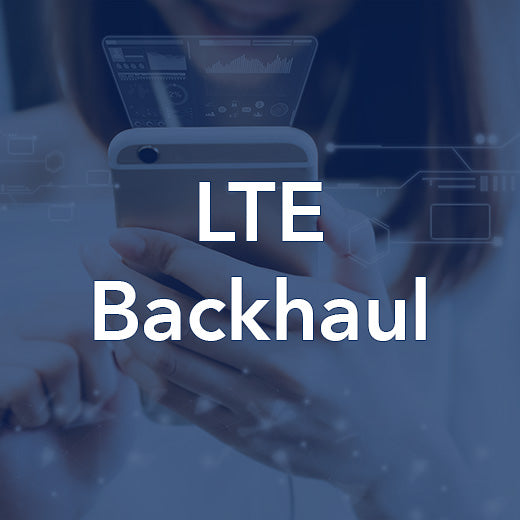
LTE Backhaul
A detailed technical description of the technologies available to be used to support the backhaul requirements of next generation 4G LTE access networks. This includes discussions of underlying backhaul architecture and concepts along with more detailed discussions of the technologies employed to support evolved Radio Access Networks (RANs), including: Carrier Ethernet, MPLS, fibre-optic transmission and packet-based microwave plus other high capacity backhaul technologies. Our LTE Backhaul Training Course (Course Code: LT1202) offers a comprehensive overview of the technologies essential for supporting the backhaul requirements of next-generation 4G LTE access networks. This course dives into the underlying backhaul architecture and concepts, as well as the technologies utilized to support evolved Radio Access Networks (RANs), including Carrier Ethernet, MPLS, fiber-optic transmission, packet-based microwave, and other high-capacity backhaul technologies. Ideal for engineering and technical management professionals involved in the commissioning, design, deployment, or operation of mobile backhaul networks, this course covers a range of topic areas such as backhaul definitions, transport network layered architectures, RAN architectures and requirements, industry forums, and various backhaul options at Layers 1, 2, and 3. Participants will also explore synchronization, redundancy, security options, and Next Generation Mobile Network (NGMN) models, providing a comprehensive understanding of LTE backhaul technologies. By enrolling in our 1-day LTE Backhaul Training Course, participants will gain valuable insights into the latest technologies and best practices for optimizing backhaul networks in the era of 4G LTE. Whether you are looking to enhance your technical knowledge or stay ahead of industry trends, this course is designed to equip you with the skills and expertise needed to excel in the fast-paced world of mobile backhaul networks. Who would benefit This course is suitable for engineering and technical management staff who are involved in the commissioning, design, deployment or operation of mobile backhaul networks. Prerequisites An understanding of mobile network architecture and operation would be beneficial as would an appreciation of legacy backhaul technologies such as TDM or ATM. Topic Areas Include What is backhaul? Transport network layered architectures RAN architectures and requirements Industry forums Layer 1 backhaul options Backhaul architecture models Fibre optics and packet-based microwave Layer 2 backhaul options Ethernet and 802.1Q VLANs Q-in-Q VLAN stacking Carrier Ethernet MPLS Layer 3 backhaul options IP RAN in LTE Synchronization (NTPv4, IEEE1588v2/PTP, Sync-E) Redundancy (MSTP, G.8031/8032) Security options (IPsec, Security Gateway) Next Generation Mobile Network (NGMN) models VLAN traffic forwarding examples for Ethernet-based RANs
POA: Private Course
-
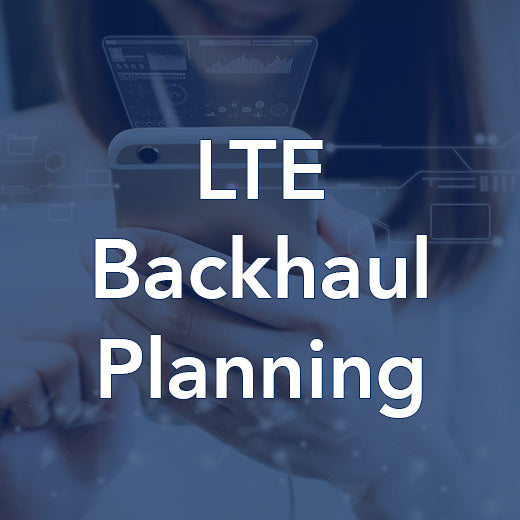
LTE Backhaul Planning
This course provides a detailed overview of the issues related to the planning of backhaul services designed to support 4G LTE Cellular sites in both dedicated and single Radio Access Network (RAN) environments. The course focuses on planning techniques related to the most commonly-employed backhaul technologies used in conjunction with LTE, such as Ethernet, packet-based microwave and IP. It also covers aspects such as timing and security solutions and presents techniques that can be employed to estimate backhaul requirements and plan for suitable deployments. Join our LTE Backhaul Planning Training Course to gain a comprehensive understanding of the planning techniques and technologies essential for supporting 4G LTE Cellular sites. This course is designed for engineers working for network operators involved in the planning and implementation of RANs, specifically focusing on the backhaul region from the cell tower back to the core network. You will learn about backhaul technologies such as Ethernet, packet-based microwave, and IP, as well as timing and security solutions crucial for LTE deployments. Our 1-day course covers topics including backhaul overview, defining 4G backhaul requirements, transport network evolution, synchronization options, VLAN management, and more. By the end of the training, you will be equipped with the knowledge and skills to estimate backhaul requirements, plan suitable deployments, and ensure efficient backhaul solutions for 4G LTE networks. No specific prerequisites are required for this course, making it accessible to a wide range of professionals in the telecom industry. Sign up now to enhance your expertise in LTE backhaul planning and stay ahead in the rapidly evolving telecommunications sector. Who would benefit This course is designed for engineers working for network operators in the planning and implementation of RANs and in particular the backhaul region from the cell tower back to the core network and are looking at the options that exist to provide backhaul solutions suitable for 4G LTE networks. Prerequisites No specific prerequisites for this course although a good understanding of mobile networks and in particular the radio access part of 3GPP based networks. Topic Areas Include Backhaul overview Backhaul planning techniques Defining 4G backhaul requirements Backhaul technologies appropriate for 4G networks Transport network evolution Multi RAT and Multi Operator (MRMO) Synchronization options Cell throughput expectations Industry initiatives and forums Radio to transport QoS mapping VLAN management Backhaul traffic profile Backhaul QoS Planning exercise – cell throughput calculations
POA: Private Course
-
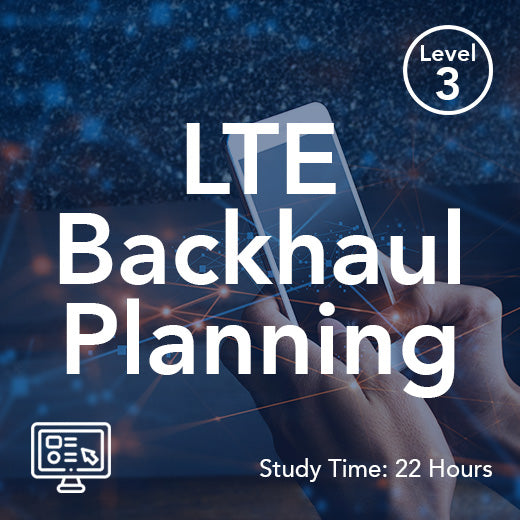
LTE Backhaul Planning (On-Demand)
This course provides a detailed overview of the issues related to the planning of backhaul services designed to support 4G LTE Cellular sites in both dedicated and single Radio Access Network (RAN) environments. The course focuses on planning techniques related to the most commonly-employed backhaul technologies used in conjunction with LTE, such as Ethernet, packet-based microwave and IP. It also covers aspects such as timing and security solutions and presents techniques that can be employed to estimate backhaul requirements and plan for suitable deployments. Join our LTE Backhaul Planning Training Course to gain a comprehensive understanding of the planning techniques and technologies essential for supporting 4G LTE Cellular sites. This course is designed for engineers working for network operators involved in the planning and implementation of RANs, specifically focusing on the backhaul region from the cell tower back to the core network. You will learn about backhaul technologies such as Ethernet, packet-based microwave, and IP, as well as timing and security solutions crucial for LTE deployments. Our 1-day course covers topics including backhaul overview, defining 4G backhaul requirements, transport network evolution, synchronization options, VLAN management, and more. By the end of the training, you will be equipped with the knowledge and skills to estimate backhaul requirements, plan suitable deployments, and ensure efficient backhaul solutions for 4G LTE networks. No specific prerequisites are required for this course, making it accessible to a wide range of professionals in the telecom industry. Sign up now to enhance your expertise in LTE backhaul planning and stay ahead in the rapidly evolving telecommunications sector. This course is delivered as a self-paced on-demand distance learning course and features illustrated course books, videos, tests and full tutor support. Who would benefit This course is designed for engineers working for network operators in the planning and implementation of RANs and in particular the backhaul region from the cell tower back to the core network and are looking at the options that exist to provide backhaul solutions suitable for 4G LTE networks. Prerequisites No specific prerequisites for this course although a good understanding of mobile networks and in particular the radio access part of 3GPP based networks. Topic Areas Include Backhaul overview Backhaul planning techniques Defining 4G backhaul requirements Backhaul technologies appropriate for 4G networks Transport network evolution Multi RAT and Multi Operator (MRMO) Synchronization options Cell throughput expectations Industry initiatives and forums Radio to transport QoS mapping VLAN management Backhaul traffic profile Backhaul QoS Planning exercise – cell throughput calculations On-Demand Online Training Our self-paced on-demand distance learning programmes are accessible on any computer, tablet or smartphone and allow you to study at a time and location that is convenient to you. Each course includes: Illustrated Course Books - featuring leading edge knowledge from subject matter experts. Videos - Detailed videos expand the points covered in the course books, discussing topics in greater depth. Tutor Support – Dedicated course tutors are available to answer any questions you might have throughout your studies. Formative Assessment - Modules include regular quizzes to support learning by testing your knowledge of the subject matter. Certification– Successfully complete the end of module tests to earn Digital Badges to demonstrate the depth of your knowledge of the topic. Included in Wray Castle Hub This course is also available as part of the Wray Castle Hub. An annual subscription delivers unlimited access to this course and over 500 hours of learning material consisting of 30+ Courses, 190+ Learning Modules, and 1,000+ Videos. Annual Subscription: £1400 (Most cost-effective option) Subscribe to Wray Castle Hub here
£500.00
-
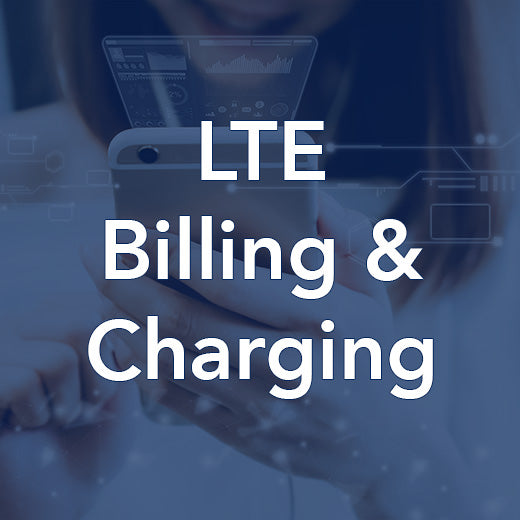
LTE Billing and Charging
Our LTE Billing and Charging Training Course provides a comprehensive technical overview of the billing and charging architecture specifically designed for 4G LTE networks. Participants will gain insights into LTE bearer, traffic flow, and Quality of Service (QoS) concepts, as well as an in-depth understanding of the architecture of both online and offline billing systems. Key nodes, interfaces, and protocols used for transporting billing and charging information will be explored, along with the interactions with the billing system during basic LTE procedures. This course is ideal for engineers, designers, managers, and individuals involved in the development, deployment, or operation of LTE billing and charging systems. Familiarity with the LTE Evolved Packet Core is assumed, and experience with 2G or 3G billing systems would be beneficial. Topics covered include EPS bearer concepts, LTE QoS models, packet flows, deep packet inspection, policy and charging control, flow-based charging, billing architecture, charging data capture points, protocols (Diameter, CAP), interfaces (Gy, Gz, Rf, Ro), charging criteria, CDR formats, CDR generation, and charging interaction with basic LTE procedures. Join us for this informative and practical training session to enhance your knowledge and skills in LTE billing and charging. Who would benefit Engineers, designers, managers and others involved in the development, deployment or operation of LTE billing and charging systems. Prerequisites Familiarity with the LTE Evolved Packet Core is assumed. Experience of 2G or 3G billing systems would be beneficial. Topic Areas Include Review of EPS bearer concepts and LTE QoS models Packet flows, service data flows and traffic flow aggregates Deep packet inspection – heuristic algorithms and bearer-aware applications Outline of policy and charging control LTE billing and charging concepts Flow-based charging Billing architecture Online and offline charging systems Charging data capture points (S-GW, PDN-GW) IMS charging capture points Charging Data Function (CDF) Protocols – Diameter, CAP Interfaces – Gy, Gz, Rf, Ro and others Charging criteria – time-based, volume-based, application-based CDR formats CDR generation Charging interaction with basic LTE procedures
POA: Private Course
-
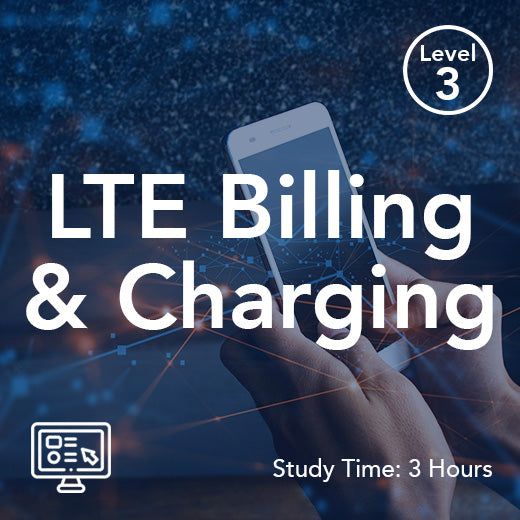
LTE Billing and Charging (On-Demand)
Our LTE Billing and Charging Training Course provides a comprehensive technical overview of the billing and charging architecture specifically designed for 4G LTE networks. Participants will gain insights into LTE bearer, traffic flow, and Quality of Service (QoS) concepts, as well as an in-depth understanding of the architecture of both online and offline billing systems. Key nodes, interfaces, and protocols used for transporting billing and charging information will be explored, along with the interactions with the billing system during basic LTE procedures. This course is ideal for engineers, designers, managers, and individuals involved in the development, deployment, or operation of LTE billing and charging systems. Familiarity with the LTE Evolved Packet Core is assumed, and experience with 2G or 3G billing systems would be beneficial. Topics covered include EPS bearer concepts, LTE QoS models, packet flows, deep packet inspection, policy and charging control, flow-based charging, billing architecture, charging data capture points, protocols (Diameter, CAP), interfaces (Gy, Gz, Rf, Ro), charging criteria, CDR formats, CDR generation, and charging interaction with basic LTE procedures. Join us for this informative and practical training session to enhance your knowledge and skills in LTE billing and charging. This self-paced on-demand distance learning course features illustrated course books, videos, tests and full tutor support. Who would benefit Engineers, designers, managers and others involved in the development, deployment or operation of LTE billing and charging systems. Prerequisites Familiarity with the LTE Evolved Packet Core is assumed. Experience of 2G or 3G billing systems would be beneficial. Topic Areas Include Review of EPS bearer concepts and LTE QoS models Packet flows, service data flows and traffic flow aggregates Deep packet inspection – heuristic algorithms and bearer-aware applications Outline of policy and charging control LTE billing and charging concepts Flow-based charging Billing architecture Online and offline charging systems Charging data capture points (S-GW, PDN-GW) IMS charging capture points Charging Data Function (CDF) Protocols – Diameter, CAP Interfaces – Gy, Gz, Rf, Ro and others Charging criteria – time-based, volume-based, application-based CDR formats CDR generation Charging interaction with basic LTE procedures
£95.00
-
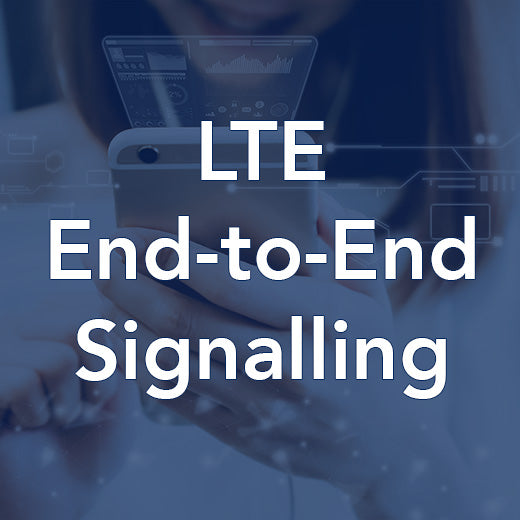
LTE End-to-End Signalling
This course is designed to provide an end-to-end view of the whole set of signalling messages that support some of the most fundamental LTE network operations, such as: initial attach, PDN Connectivity, EPS Bearer setup, bearer resource allocation, handover and detach. Each procedure is presented in terms of the progression of signalling messages exchanged and each message is explored in detail. The course provides details of messages belonging to the following signalling protocols: RRC, NAS, S1AP, X2AP, GTPv2-C and also the Diameter S6a, S13 and Gx applications. Our LTE End-to-End Signalling Training Course (Course Code: LT1301) offers a comprehensive overview of the signalling messages involved in key LTE network operations. From initial attach to handover and detach procedures, participants will gain a deep understanding of the signalling protocols including RRC, NAS, S1AP, X2AP, GTPv2-C, and Diameter S6a, S13, and Gx applications. This course is ideal for engineers, managers, and personnel seeking a technical overview of the complete LTE signalling environment, providing valuable insights into the management of fundamental LTE procedures. Participants in this course will benefit from a detailed exploration of air interface signalling protocols, E-UTRAN signalling protocols, and EPC signalling protocols. Topics covered include initial attach procedures, idle mode procedures, connected mode procedures, handover procedures, and detach procedures. Prerequisites include a basic understanding of LTE network architecture, services, and protocols, which can be acquired through our LTE Engineering Overview and LTE Evolved Packet Core Network (LT3604) courses. An understanding of IP would also be beneficial for participants. Gain the knowledge and skills needed to navigate the complexities of LTE signalling protocols and procedures, and enhance your expertise in managing LTE network operations effectively. Who would benefit This course is designed for engineers, managers and other personnel who have a need to acquire a technical overview of the total LTE signalling environment (not just signalling in one part of the network) and also those that require an end-to-end view of the management of fundamental LTE procedures. Prerequisites A basic understanding of LTE network architecture, services and protocols, which can be gained from attending the LTE Engineering Overview (LT3600) and LTE Evolved Packet Core Network (LT3604) courses. An understanding of IP would be beneficial. Topic Areas Include Air interface signalling protocols E-UTRAN signalling protocols EPC signalling protocols Initial attach procedures Idle mode procedures S1 release Tracking area update procedure Service request procedure with ISR enabled Extended service request for CS fallback Connected mode procedures Connection establishment, modification and release Bearer resource allocation triggering dedicated EPS bearer establishment Bearer resource modification triggering EPS bearer modification PDN connectivity request Handover procedures X2-based handover with direct forwarding S1-based handover with S-GW change with indirect forwarding Inter-System PS handover to UMTS/HSPA without forwarding Detach procedures Also available as a Self-Study Online Learning Programme, learn more.
POA: Private Course
-
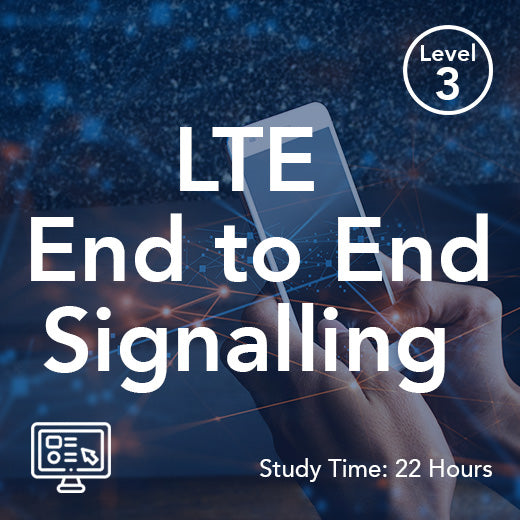
LTE End-to-End Signalling (On-Demand)
This course is designed to provide an end-to-end view of the whole set of signalling messages that support some of the most fundamental LTE network operations, such as: initial attach, PDN Connectivity, EPS Bearer setup, bearer resource allocation, handover and detach. Each procedure is presented in terms of the progression of signalling messages exchanged and each message is explored in detail. The course provides details of messages belonging to the following signalling protocols: RRC, NAS, S1AP, X2AP, GTPv2-C and also the Diameter S6a, S13 and Gx applications. Our LTE End-to-End Signalling Training Course (Course Code: LT1301) offers a comprehensive overview of the signalling messages involved in key LTE network operations. From initial attach to handover and detach procedures, participants will gain a deep understanding of the signalling protocols including RRC, NAS, S1AP, X2AP, GTPv2-C, and Diameter S6a, S13, and Gx applications. This course is ideal for engineers, managers, and personnel seeking a technical overview of the complete LTE signalling environment, providing valuable insights into the management of fundamental LTE procedures. Participants in this course will benefit from a detailed exploration of air interface signalling protocols, E-UTRAN signalling protocols, and EPC signalling protocols. Topics covered include initial attach procedures, idle mode procedures, connected mode procedures, handover procedures, and detach procedures. Prerequisites include a basic understanding of LTE network architecture, services, and protocols, which can be acquired through our LTE Engineering Overview and LTE Evolved Packet Core Network (LT3604) courses. An understanding of IP would also be beneficial for participants. Gain the knowledge and skills needed to navigate the complexities of LTE signalling protocols and procedure This self-paced on-demand distance learning course features illustrated course books, videos, tests and full tutor support. Who would benefit This course is designed for engineers, managers and other personnel who have a need to acquire a technical overview of the total LTE signalling environment (not just signalling in one part of the network) and also those that require an end-to-end view of the management of fundamental LTE procedures. Prerequisites A basic understanding of LTE network architecture, services and protocols, which can be gained from attending the LTE Engineering Overview (LT3600) and LTE Evolved Packet Core Network (LT3604) courses. An understanding of IP would be beneficial. Topic Areas Include Air interface signalling protocols E-UTRAN signalling protocols EPC signalling protocols Initial attach procedures Idle mode procedures S1 release Tracking area update procedure Service request procedure with ISR enabled Extended service request for CS fallback Connected mode procedures Connection establishment, modification and release Bearer resource allocation triggering dedicated EPS bearer establishment Bearer resource modification triggering EPS bearer modification PDN connectivity request Handover procedures X2-based handover with direct forwarding S1-based handover with S-GW change with indirect forwarding Inter-System PS handover to UMTS/HSPA without forwarding Detach procedures
£750.00
-

LTE Engineering
Course Code: LT3600 Course Summary A technical introduction and overview of LTE and LTE-Advanced, including the air interface, radio access network, core network and other key associated technologies. Who would benefit This course is intended for engineers either new to, or already working in, mobile communications. Prerequisites Familiarity with telecommunications and general engineering terminology is assumed and some understanding of 2G and 3G cellular systems would be beneficial. Topic Areas Include High level architecture of LTE Basic principles of OFDMA and SC-FDMA Air interface protocol stack Structure of the air interface physical layer E-UTRAN architecture, interfaces and protocols EPC architecture, interfaces and protocols LTE state diagrams Principles of bearers and Quality of Service (QoS) Voice options for LTE Power-on procedures UE procedures in idle and connected modes Enhancements in LTE-Advanced Also available as a Self-Study Online Learning Programme, learn more.
POA: Private Course
-
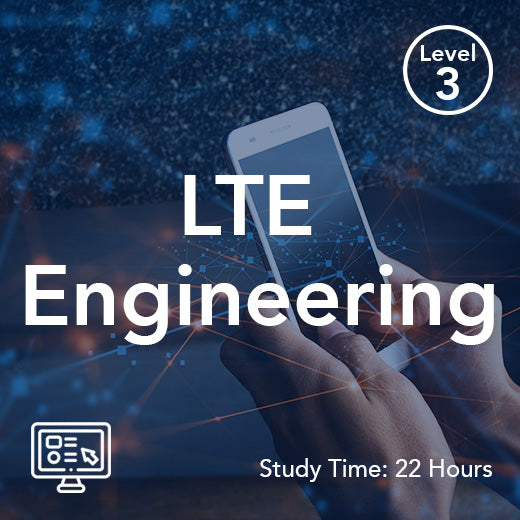
LTE Engineering (On-Demand)
A technical introduction and overview of LTE and LTE-Advanced, including the air interface, radio access network, core network and other key associated technologies. This self-paced on-demand distance learning course features illustrated course books, videos, tests and full tutor support. Who would benefit This course is intended for engineers either new to, or already working in, mobile communications. Prerequisites Familiarity with telecommunications and general engineering terminology is assumed and some understanding of 2G and 3G cellular systems would be beneficial. Topic Areas Include High level architecture of LTE Basic principles of OFDMA and SC-FDMA Air interface protocol stack Structure of the air interface physical layer E-UTRAN architecture, interfaces and protocols EPC architecture, interfaces and protocols LTE state diagrams Principles of bearers and Quality of Service (QoS) Voice options for LTE Power-on procedures UE procedures in idle and connected modes Enhancements in LTE-Advanced
£750.00
-
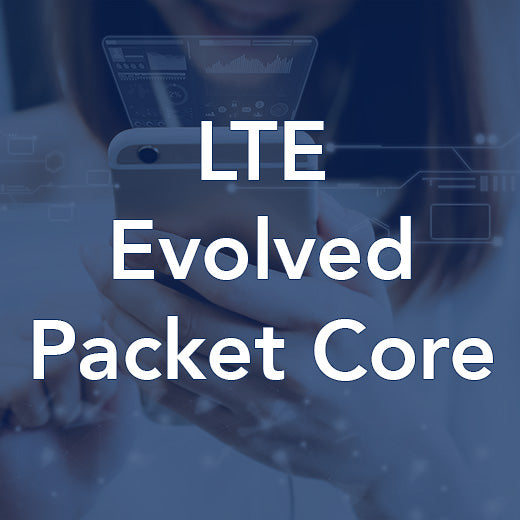
LTE Evolved Packet Core Network
Our LTE Evolved Packet Core Network Training Course is designed to provide a comprehensive technical understanding of the Evolved Packet Core (EPC) for LTE systems. In this course, participants will learn about EPC architecture, interfaces, service provision concepts, application of IP technologies, overall protocol architectures, and optionally, a review of IMS functionality Engineers and other staff involved with switching or transmission architecture, optimization, network management, network testing, or monitoring of the EPC would greatly benefit from this training. Participants are expected to have an engineering background with some knowledge of core network technologies, including IP. Experience with 2G or 3G systems would also be beneficial for a better understanding of the course material. The course covers a wide range of topic areas, including the high-level architecture of LTE, functions of key EPC components like MME, S-GW, PDN-GW, HSS, and PCRF, LTE state diagrams, inter-operation with 2G, 3G, and non-3GPP networks, voice options for LTE, principles of bearers and Quality of Service (QoS), data transport in the EPC, policy and charging control architecture, IETF and 3GPP protocols in the EPC, power-on procedures, UE procedures in idle and connected modes, enhancements in LTE-Advanced, and optionally, an overview of the functions and architecture of the IMS. Who would benefit Engineers and other staff involved with switching or transmission architecture, optimization, network management, network testing or monitoring of the EPC. Prerequisites An engineering background with some knowledge of core network technologies, including IP, is assumed. Experience of 2G or 3G systems would be beneficial. Topic Areas Include High level architecture of LTE Functions of the MME, S-GW, PDN-GW, HSS and PCRF LTE state diagrams Inter-operation with 2G, 3G and non-3GPP networks Voice options for LTE Principles of bearers and Quality of Service (QoS) Data transport in the EPC Policy and charging control architecture IETF protocols in the EPC, including SCTP, DiffServ and Diameter 3GPP protocols in the EPC, including GTP and S1-AP Power-on procedures UE procedures in idle and connected modes Enhancements in LTE-Advanced [Optional] Overview of the functions and architecture of the IMS Also available as a Self-Study Online Learning Programme, learn more.
POA: Private Course
-
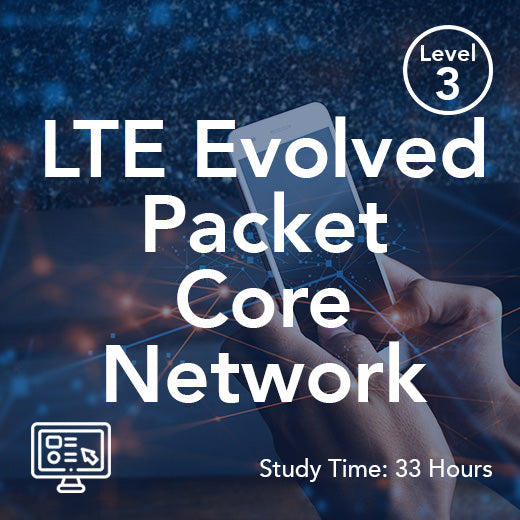
LTE Evolved Packet Core Network (On-Demand)
Our LTE Evolved Packet Core Network Training Course is designed to provide a comprehensive technical understanding of the Evolved Packet Core (EPC) for LTE systems. In this course, participants will learn about EPC architecture, interfaces, service provision concepts, application of IP technologies, overall protocol architectures, and optionally, a review of IMS functionality Engineers and other staff involved with switching or transmission architecture, optimization, network management, network testing, or monitoring of the EPC would greatly benefit from this training. Participants are expected to have an engineering background with some knowledge of core network technologies, including IP. Experience with 2G or 3G systems would also be beneficial for a better understanding of the course material. The course covers a wide range of topic areas, including the high-level architecture of LTE, functions of key EPC components like MME, S-GW, PDN-GW, HSS, and PCRF, LTE state diagrams, inter-operation with 2G, 3G, and non-3GPP networks, voice options for LTE, principles of bearers and Quality of Service (QoS), data transport in the EPC, policy and charging control architecture, IETF and 3GPP protocols in the EPC, power-on procedures, UE procedures in idle and connected modes, enhancements in LTE-Advanced, and optionally, an overview of the functions and architecture of the IMS. This self-paced on-demand distance learning course features illustrated course books, videos, tests and full tutor support. Who would benefit Engineers and other staff involved with switching or transmission architecture, optimization, network management, network testing or monitoring of the EPC. Prerequisites An engineering background with some knowledge of core network technologies, including IP, is assumed. Experience of 2G or 3G systems would be beneficial. Topic Areas Include High level architecture of LTE Functions of the MME, S-GW, PDN-GW, HSS and PCRF LTE state diagrams Inter-operation with 2G, 3G and non-3GPP networks Voice options for LTE Principles of bearers and Quality of Service (QoS) Data transport in the EPC Policy and charging control architecture IETF protocols in the EPC, including SCTP, DiffServ and Diameter 3GPP protocols in the EPC, including GTP and S1-AP Power-on procedures UE procedures in idle and connected modes Enhancements in LTE-Advance
£950.00
-
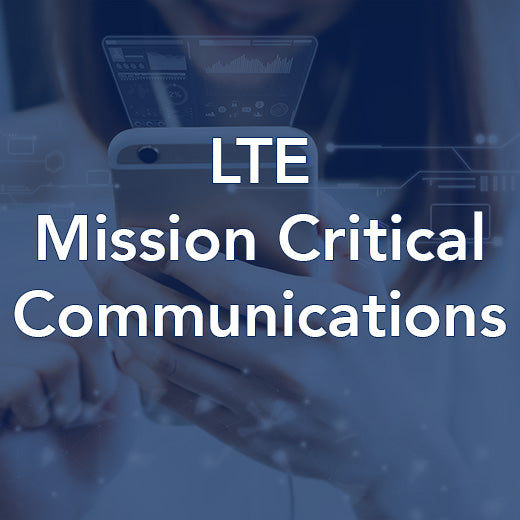
LTE Mission Critical Communications
LTE Mission Critical Communications training course is essential for individuals working with emergency services or government agencies who are looking to familiarize themselves with the technology set to replace LMR systems. This 2-day course covers a range of topics including the requirements of a Mission Critical Network, introduction to LTE, LTE Radio Interface, Multimedia Broadcast Multicast Service, and more. Participants will benefit from gaining a deeper understanding of LTE technology and its applications in mission critical communications. While a basic knowledge of LMR systems is advantageous, a strong familiarity with the requirements of emergency service communications is more important for this course. By the end of the training, attendees will be equipped with the knowledge and skills needed to navigate the transition from LMR to LTE systems effectively. Join us for the LTE Mission Critical Communications training course to stay ahead of the curve in the evolving landscape of emergency communication technologies. Enhance your expertise in LTE, MCPTT, MCVideo, MCData, and more, and be prepared for the future of mission critical communications. Who Would Benefit LTE Mission Critical Communications training course is aimed at those who are working with the emergency services or government agencies wishing to become familiar with the technology planned to replace LMR systems . Prerequisites A basic understanding of LMR systems would be advantageous but familiarity with the requirements of emergency service communications is more important. Course Contents Requirements of a Mission Critical Network Introduction to LTE The LTE Radio Interface Multimedia Broadcast Multicast Service The IP Multimedia Subsystem (IMS) Group Communication System Enablers for LTE (GCSE_LTE) Mission Critical Push to Talk (MCPTT) Mission Critical Video (MCVideo) Mission Critical Data (MCData) LTE and LMR Interworking
POA: Private Course
-
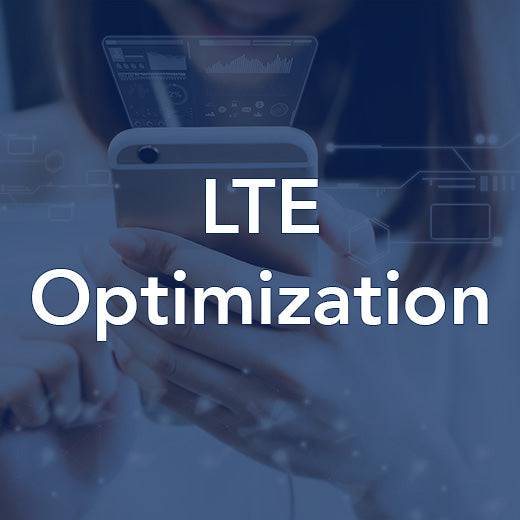
LTE Optimization
Course Code: LT1001 Course Summary An introduction to the principles and techniques that relate to the parameters available in the LTE Radio Access Network (RAN). This includes cell configuration, idle mode parameters and connected mode parameters. All elements are reinforced through classroom exercises and tool demonstrations. Who would benefit This course is intended for experienced radio access optimizers and those involved with device development or functionality testing for LTE-based networks. Prerequisites This course assumes an engineering background with some knowledge of digital radio systems in general and good knowledge of the LTE air interface structure and operation. Experience of parameter tuning for 2G or 3G systems would be useful. Topic Areas Include Radio spectrum and radio channel organization Key LTE radio metrics Interpreting drive survey results Identifying key air interface parameters Verifying settings for radio parameters Performance of a single frequency network Network access parameters Cell selection and reselections Inter-technology cell reselections Prioritized cell reselections Connected mode measurements Triggered measurement reports LTE handovers Analysing handovers Inter-technology handovers Management of discontinuous reception Includes exercises.
POA: Private Course
-
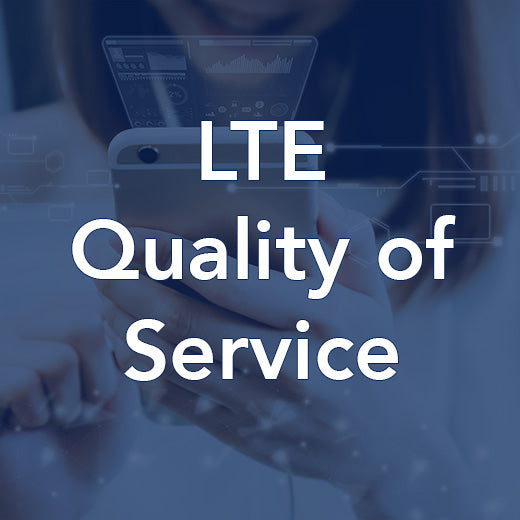
LTE Quality of Service
Course Code: LT1314 Course Summary Our LTE Quality of Service training course is designed to provide a comprehensive understanding of the key concepts and principles behind Quality of Service (QoS) in LTE networks. This course delves into the End-to-End EPS Bearer and the underlying Transport Network Layer (TNL) where QoS is crucially applied. Participants will explore the main QoS concepts and learn about the interworking between LTE QoS and other network types such as UMTS, GPRS, and IMS.This course is ideal for engineering and technical management professionals who need a technical overview of the technologies and techniques utilized by 4G LTE networks to define and control the QoS for user connections. Participants are expected to have an engineering background with some knowledge of telecommunications technologies and protocols. Previous LTE training and familiarity with QoS mechanisms in legacy 2G and 3G networks would be beneficial.By enrolling in this course, you will gain insights into topics such as E-UTRAN architecture and interfaces, EPS Bearer and PDN Connectivity options, LTE QoS parameters, QCI, ARP, QoS Management, LTE PCC mechanisms, TNL concepts, DiffServ, MPLS, Ethernet QoS, and much more. Enhance your knowledge and skills in LTE QoS with our expert-led training course. Who would benefit This course is suitable for engineering and technical management staff who require a technical overview of the technologies and techniques employed by 4G LTE networks to define and control the QoS applied to user connections. Prerequisites An engineering background with some knowledge of telecommunications technologies and protocols is assumed and previous LTE training would be beneficial, as would knowledge of QoS mechanisms in legacy 2G and 3G networks. Topic Areas Include E-UTRAN architecture and interfaces EPS Bearer and PDN Connectivity options and operations User plane connection concepts, packet flows, SDFs and Traffic Flow Aggregates LTE QoS parameters, QCI, ARP QoS parameter representation in LTE signalling protocols QoS Management – TFTs and packet filters LTE PCC (Policy and Charging Control) mechanisms PCC Rules, function and structure Interaction between PCC elements and internal and external network nodes Mapping LTE QoS to legacy network schemes Measuring QoS TNL concepts, architecture and QoS mechanisms DiffServ, MPLS and Ethernet QoS End-to-End QoS Architecture and Operation Network node QoS functions QoS influence on LTE handovers Also available as a Self-Study Online Learning Programme, learn more.
POA: Private Course
-
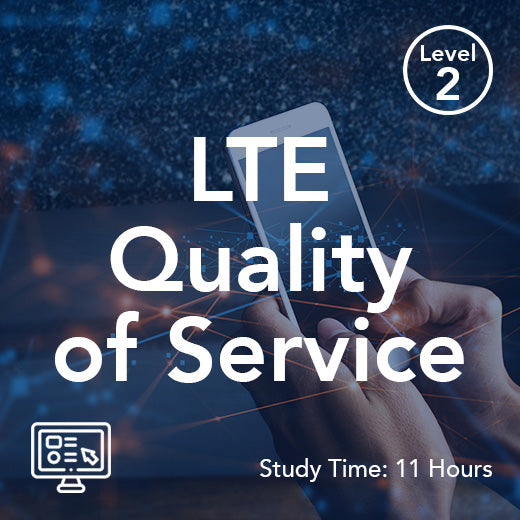
LTE Quality of Service (On-Demand)
Our LTE Quality of Service training course is designed to provide a comprehensive understanding of the key concepts and principles behind Quality of Service (QoS) in LTE networks. This course delves into the End-to-End EPS Bearer and the underlying Transport Network Layer (TNL) where QoS is crucially applied. Participants will explore the main QoS concepts and learn about the interworking between LTE QoS and other network types such as UMTS, GPRS, and IMS.This course is ideal for engineering and technical management professionals who need a technical overview of the technologies and techniques utilized by 4G LTE networks to define and control the QoS for user connections. Participants are expected to have an engineering background with some knowledge of telecommunications technologies and protocols. Previous LTE training and familiarity with QoS mechanisms in legacy 2G and 3G networks would be beneficial.By enrolling in this course, you will gain insights into topics such as E-UTRAN architecture and interfaces, EPS Bearer and PDN Connectivity options, LTE QoS parameters, QCI, ARP, QoS Management, LTE PCC mechanisms, TNL concepts, DiffServ, MPLS, Ethernet QoS, and much more. Enhance your knowledge and skills in LTE QoS with our expert-led training course. This self-paced on-demand distance learning course features illustrated course books, videos, tests and full tutor support. Who would benefit This course is suitable for engineering and technical management staff who require a technical overview of the technologies and techniques employed by 4G LTE networks to define and control the QoS applied to user connections. Prerequisites An engineering background with some knowledge of telecommunications technologies and protocols is assumed and previous LTE training would be beneficial, as would knowledge of QoS mechanisms in legacy 2G and 3G networks. Topic Areas Include E-UTRAN architecture and interfaces EPS Bearer and PDN Connectivity options and operations User plane connection concepts, packet flows, SDFs and Traffic Flow Aggregates LTE QoS parameters, QCI, ARP QoS parameter representation in LTE signalling protocols QoS Management – TFTs and packet filters LTE PCC (Policy and Charging Control) mechanisms PCC Rules, function and structure Interaction between PCC elements and internal and external network nodes Mapping LTE QoS to legacy network schemes Measuring QoS TNL concepts, architecture and QoS mechanisms DiffServ, MPLS and Ethernet QoS End-to-End QoS Architecture and Operation Network node QoS functions QoS influence on LTE handovers
£500.00
-
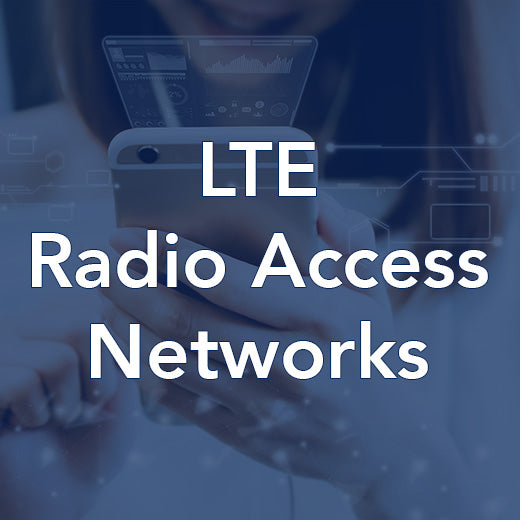
LTE Radio Access Network
Our LTE Radio Access Network training course provides a comprehensive technical overview of the Radio Access Network (RAN) for LTE systems. This course covers topics such as E-UTRAN architecture, configuration options, security functions, core network interactions, and bearer establishment procedures. Engineers involved in transmission, architecture design, optimization, network management, or monitoring of the LTE RAN will benefit from this course. Participants are expected to have an engineering background with some knowledge of telecommunications technologies and protocols. Experience with 2G or 3G systems would also be beneficial. The course includes in-depth discussions on E-UTRAN architecture and interfaces, frequency bands and channels, cell structures, handover management, security functions, and more. Practical exercises are included to enhance learning and understanding of the material. Join us to gain valuable insights into LTE RAN technologies and enhance your skills in managing and optimizing LTE networks. Don't miss this opportunity to expand your knowledge and expertise in the field of LTE radio access networks. Who would benefit Engineers involved with transmission or architecture design, optimization, network management or monitoring of the LTE RAN. Prerequisites An engineering background with some knowledge of telecommunications technologies and protocols is assumed. Experience of 2G or 3G systems would be beneficial. Topic Areas Include E-UTRAN architecture and interfaces E-UTRAN frequency bands and channels Cell structures, hierarchies and sizes LTE cell site configurations Tracking Areas (TA) and TA list management Handover management E-UTRAN Self Optimizing Network (SON) functions Access stratum and access network security Interaction between eNB and MME/S-GW devices Logical and physical connectivity to EPC nodes LTE E-UTRAN and small cell deployments Relay nodes, LIPA, SIPTO and LPP S1AP (S1 Application Protocol) message structures and operation X2AP (X2 Application Protocol) message structures and operation Connection establishment Overview of interaction between E-UTRAN protocols during basic LTE procedures Includes exercises.
POA: Private Course
-
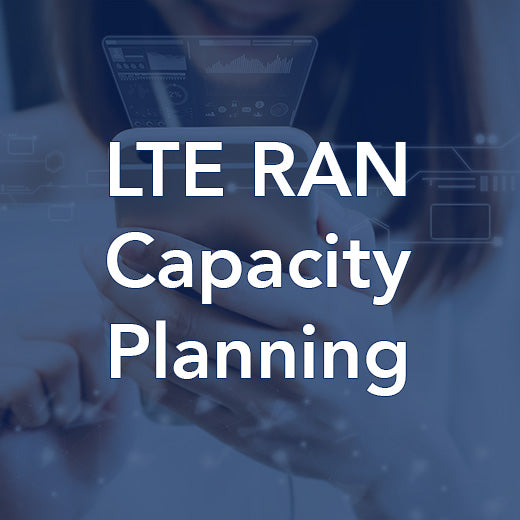
LTE RAN Capacity Planning
Our LTE Security Training Course offers a comprehensive overview of the security measures implemented in LTE networks. This course covers topics such as LTE Authentication and Key Agreement (AKA) procedures, Non-Access Stratum, Access Stratum, Access Network, and Core Network security. Engineers, managers, and other professionals looking to gain a technical understanding of LTE network security will benefit from this course. It is also suitable for individuals in the broader technical community who need to grasp the security protocols used in cellular networks. Participants are expected to have prior knowledge of LTE networks, either through attending our LTE Engineering Overview course (LT3600) or possessing equivalent basic LTE knowledge. Familiarity with legacy 2G and 3G security procedures, as well as a basic understanding of LTE network architecture and functionality, would be advantageous. Join us for this training to delve into security threats and mitigations, 3GPP security strata, authentication processes, key agreement procedures, security algorithms, and more. Upgrade your skills and stay ahead in the dynamic world of LTE security with our expert-led training. Who would benefit This course is designed for engineers working for network operators in the planning and implementation of RANs. Prerequisites This course assumes an engineering background, as well as a good understanding of LTE. Topic Areas Include E-UTRAN architecture and protocols EPS bearers and QoS Subscriber traffic profiling Signalling event traffic modelling Signalling events and event dimensioning RAN synchronization options and overheads Dimensioning O&M Air interface structure and bandwidth options Maximum theoretical throughput estimations Dimensioning the RAN for voice traffic CQI and user plane traffic dimensioning
POA: Private Course
-
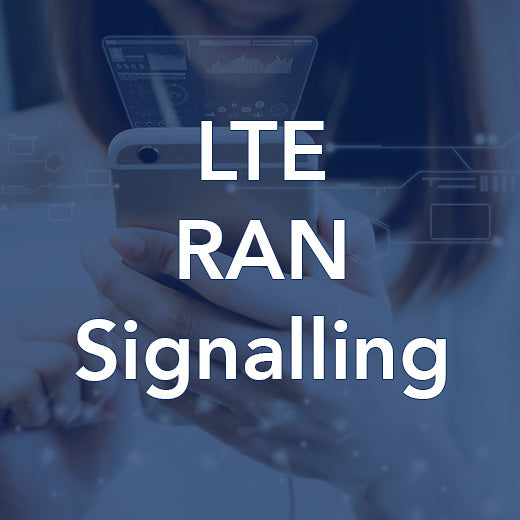
LTE RAN Signalling
Our LTE RAN Signalling Training Course is designed for engineers involved in equipment design, operation, optimization, or monitoring of the LTE Radio Access Network. This 1-day course provides participants with a comprehensive understanding of LTE signalling protocols and interfaces. Participants are expected to have familiarity with LTE and the LTE RAN, which can be gained from attending our LTE Engineering Overview (LT3600) course. Experience with 2G or 3G air interface signalling systems would also be beneficial. Please note that this course is not suitable for those who have attended the LTE RAN course (LT3603) as it covers similar signalling topics. The course covers essential topics such as LTE Signalling Protocols and Interfaces, S1 Interface Messages and Procedures, and X2 Interface Messages and Procedures. By the end of the training, participants will have a solid foundation in LTE RAN signalling, enabling them to effectively design, operate, optimize, and monitor LTE networks. Who Would Benefit Engineers involved with equipment design, operation, optimization or monitoring of the LTE Radio Access Network. Prerequisites Familiarity with LTE and the LTE RAN is assumed and can be gained from attending the LTE Engineering Overview (LT3600) course. Experience of 2G or 3G air interface signalling systems would be beneficial. This course is not suitable for those who have attended the LTE RAN course (LT3603) as it covers similar signalling topics. Contents LTE Signalling Protocols and Interfaces S1 Interface Messages and Procedures X2 Interface Messages and Procedures
POA: Private Course
-
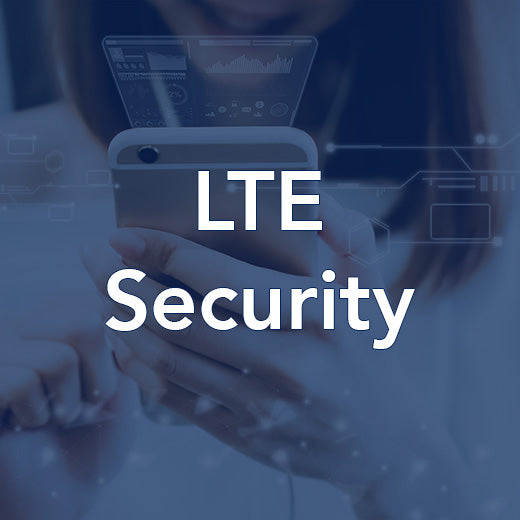
LTE Security
Course Code: LT1303 Course Summary This course provides a detailed overview of the security environment developed for LTE networks, including the LTE Authentication and Key Agreement (AKA) procedures and the provisions for Non-Access Stratum, Access Stratum, Access Network and Core Network security. Who would benefit This course is designed for engineers, managers and other personnel who have a need to acquire a technical overview of the security environment employed within LTE networks. It will also be of benefit to those in the wider technical community who have a need to understand the security protocols employed by cellular networks. Prerequisites Attendance on this course assumes previous attendance on the LTE Engineering Overview course (LT3600) or equivalent basic LTE knowledge. An understanding of legacy 2G and 3G security procedures would be an advantage as would a basic understanding of LTE network architecture and functionality. Topic Areas Include Security threats and mitigations 3GPP security strata and the LTE security architecture Non-Access Stratum, Access Stratum, Access Network and Core Network Security Overall AKA process Security contexts Subscriber and UE identifiers Authentication process, vectors and algorithms Key agreement procedures AKA keys and algorithms Key hierarchy, key sets and key set identifiers Key derivation functions KeNB chaining and the NH (Next Hop) key EEA and EIA security algorithms Security procedures
POA: Private Course
-
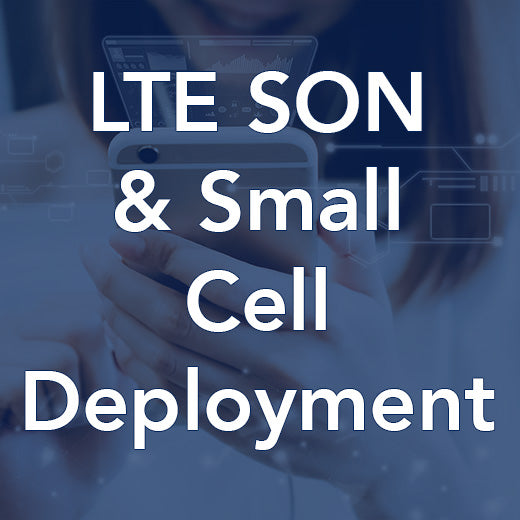
LTE SON and Small Cell Deployment
LTE, SON, and Small Cell Deployment Training Course is a comprehensive program designed to explore the intricacies of Self-Organizing Networks (SON) and the deployment of small cells and femtocells. This course delves into key features and procedures that enable self-configuration within a SON, as well as addressing issues related to femtocell deployment such as interference management and control techniques. Ideal for professionals working in planning-related roles for network operators or as consultants, this course assumes existing knowledge of cell planning principles in a mobile environment. Participants will benefit from a deep dive into topics like SON drivers, automatic neighbor relation (ANR), mobility robustness optimization, and deployment configurations. By the end of this 1-day course consisting of 2 live online sessions, attendees will have a solid understanding of the complexities and best practices surrounding LTE, SON, and small cell deployment. Enhance your expertise in small cell deployment and stay ahead in the ever-evolving telecommunications industry with our LTE, SON, and Small Cell Deployment Training Course. Gain valuable insights into self-configuring networks, interference management, and deployment configurations to optimize network performance and efficiency. Join us for 2 live online sessions and deepen your knowledge of SON drivers, automatic PCI configuration, and mobility load balancing. Don't miss this opportunity to advance your skills and propel your career in mobile network planning and deployment. Who would benefit This course would benefit those with a keen interest in the issues surrounding the deployment of small cells and femtocells in particular. This might include those working in planning-related roles for network operators or as individual consultants. Prerequisites This course assumes existing knowledge of cell planning principles in a mobile environment. Topic Areas Include SON – drivers Self-configuration Automatic Neighbour Relation (ANR) Automatic PCI configuration Inter-Cell interference Co-ordination (ISIC) Mobility robustness optimization Mobility load balancing Energy saving Deployment configurations Control of downlink interference
POA: Private Course
-
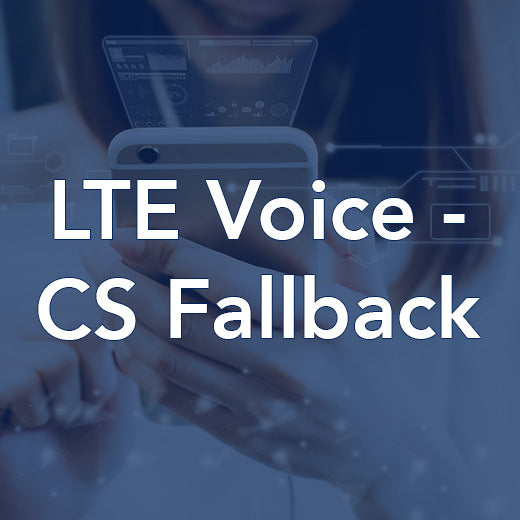
LTE Voice - CS Fallback
This LTE Voice CS Fallback training course is designed to provide a comprehensive technical understanding of how CS fallback is used to deliver LTE voice services. Participants will gain insights into the technical aspects of CS fallback architecture, SGs Application Protocol (SGsAP), combined attach procedures, call setup options, roaming retry, SMS message delivery, and more. Ideal for engineering and technical management professionals seeking to deepen their knowledge of LTE voice delivery options, this course is a valuable resource for those looking to enhance their skills in this specialized area. Prior attendance on the LTE Engineering Overview course (LT3600) or equivalent basic LTE knowledge is recommended, along with a working knowledge of IP. Join us for this 1-day course where industry experts will guide you through the intricacies of LTE voice CS fallback. Enhance your technical expertise and stay ahead in the rapidly evolving field of LTE technology with this insightful and practical training opportunity. Who would benefit This course is suitable for engineering and technical management staff who require a technical description of the options that exist in LTE for delivering voice and other real-time traffic types by means of CS fallback. Prerequisites Attendance on this course assumes previous attendance on the LTE Engineering Overview course (LT3600) or equivalent basic LTE knowledge (although a recap of basic LTE architecture and concepts is provided at the start of the course) and also assumes a working knowledge of IP. Topic Areas Include Technical overview of LTE Introduction to the options for LTE voice CS fallback architecture SGs Application Protocol (SGsAP) Combined attach procedure Alignment of tracking and location areas CS fallback call setup options Mobile-originated and mobile-terminated call setup procedures Roaming retry and roaming forwarding Delivery of SMS messages over the SGs interface
POA: Private Course
-
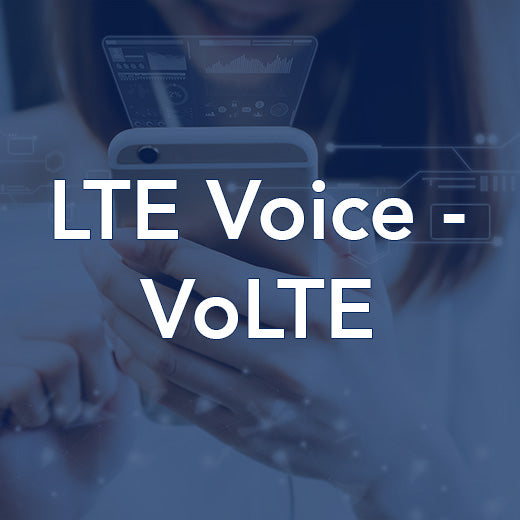
LTE Voice - VoLTE
Our LTE Voice (VoLTE) training course is designed to provide a comprehensive technical understanding of how VoIP services are delivered using LTE and the IP Multimedia Subsystem. This course is ideal for engineering and technical management professionals looking to gain in-depth knowledge of the options available in LTE for delivering voice and real-time traffic through VoIP. Topics covered in this course include a technical overview of LTE, introduction to LTE voice options, IP Multimedia Subsystem (IMS) overview, Voice over LTE (VoLTE) system architecture, VoLTE protocols, services, and codecs, VoLTE call setup procedures, SRVCC, SMS delivery over IMS, VoLTE emergency calls, and Voice over Wi-Fi. Whether you're new to LTE or looking to enhance your existing knowledge, our 2-day course provide a detailed exploration of VoLTE technology. Join us to expand your expertise and stay ahead in the rapidly evolving world of telecommunications. Who would benefit This course is suitable for engineering and technical management staff who require a technical description of the options that exist in LTE for delivering voice and other real-time traffic types by means of VoIP. Prerequisites Attendance on this course assumes previous attendance on the LTE Engineering Overview course (LT3600) or equivalent basic LTE knowledge (although a recap of basic LTE architecture and concepts is provided at the start of the course) and also assumes a working knowledge of IP. Topic Areas Include Technical overview of LTE Introduction to the options for LTE voice Technical overview of the IP Multimedia Subsystem (IMS) System architecture for Voice over LTE (VoLTE) VoLTE protocols, services and codecs VoLTE power-on and registration procedures VoLTE call setup procedures Access domain selection Single Radio Voice Call Continuity (SRVCC) Delivery of SMS messages over the IMS VoLTE emergency calls Voice over Wi-Fi Also available as a Self-Study Online Learning Programme, learn more.
POA: Private Course
-
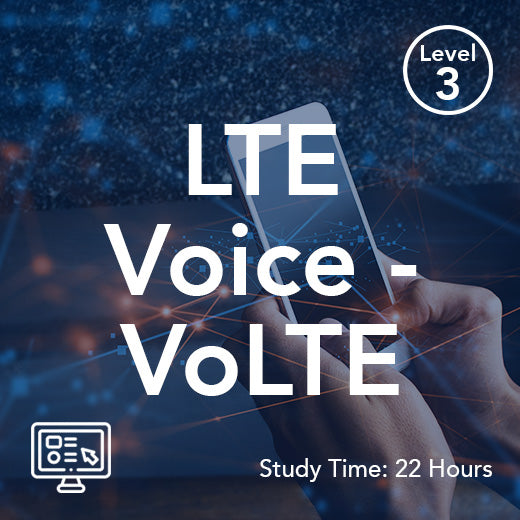
LTE Voice - VoLTE (On-Demand)
Our LTE Voice (VoLTE) training course is designed to provide a comprehensive technical understanding of how VoIP services are delivered using LTE and the IP Multimedia Subsystem. This course is ideal for engineering and technical management professionals looking to gain in-depth knowledge of the options available in LTE for delivering voice and real-time traffic through VoIP. Topics covered in this course include a technical overview of LTE, introduction to LTE voice options, IP Multimedia Subsystem (IMS) overview, Voice over LTE (VoLTE) system architecture, VoLTE protocols, services, and codecs, VoLTE call setup procedures, SRVCC, SMS delivery over IMS, VoLTE emergency calls, and Voice over Wi-Fi. This self-paced on-demand distance learning course features illustrated course books, videos, tests and full tutor support. Who would benefit This course is suitable for engineering and technical management staff who require a technical description of the options that exist in LTE for delivering voice and other real-time traffic types by means of VoIP. Prerequisites Attendance on this course assumes previous attendance on the LTE Engineering Overview course (LT3600) or equivalent basic LTE knowledge (although a recap of basic LTE architecture and concepts is provided at the start of the course) and also assumes a working knowledge of IP. Topic Areas Include Technical overview of LTE Introduction to the options for LTE voice Technical overview of the IP Multimedia Subsystem (IMS) System architecture for Voice over LTE (VoLTE) VoLTE protocols, services and codecs VoLTE power-on and registration procedures VoLTE call setup procedures Access domain selection Single Radio Voice Call Continuity (SRVCC) Delivery of SMS messages over the IMS VoLTE emergency calls Voice over Wi-Fi
£750.00
-
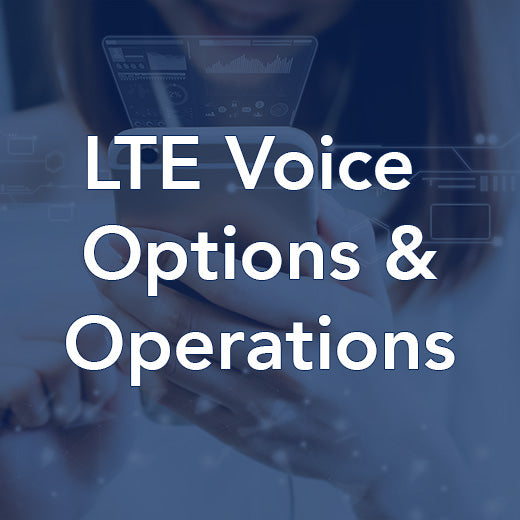
LTE Voice Options and Operations
Our LTE Voice Options and Operations Training Course (Course Code: LT1002) is designed to provide a comprehensive technical understanding of the methods available for delivering voice services over LTE networks. This 3-day course is ideal for engineering and technical management professionals seeking in-depth knowledge of LTE voice delivery and real-time traffic handling. Participants will gain insight into LTE voice options, CS fallback architecture, IMS, VoLTE protocols, SRVCC, voice over Wi-Fi, and more. Prerequisites for this course include prior attendance at the LTE Engineering Overview course (LT3600) or equivalent basic LTE knowledge, as well as a working understanding of IP. Our expert instructors will provide a recap of basic LTE concepts at the beginning of the course to ensure all participants are on the same page. By the end of the training, attendees will have a solid grasp of LTE voice delivery methods and the technical intricacies involved in offering voice services over LTE networks. Join us for our LTE Voice Options and Operations Training Course to enhance your technical skills and stay ahead in the rapidly evolving world of telecommunications. Gain valuable insights into the latest advancements in LTE voice technology and learn how to effectively implement voice services over LTE networks. Don't miss this opportunity to expand your knowledge and expertise in LTE voice operations. Who would benefit This course is suitable for engineering and technical management staff who require a technical description of the options that exist in LTE for delivering voice and other real-time traffic types, that would traditionally have been carried by Circuit Switched (CS) technologies. Prerequisites Attendance on this course assumes previous attendance on the LTE Engineering Overview course (LT3600) or equivalent basic LTE knowledge (although a recap of basic LTE architecture and concepts is provided at the start of the course) and also assumes a working knowledge of IP. Topic Areas Include Technical overview of LTE Introduction to the options for LTE voice CS fallback architecture and protocols CS fallback attach and call setup procedures Technical overview of the IMS System architecture for Voice over LTE (VoLTE) VoLTE protocols, services and codecs VoLTE power-on and registration procedures VoLTE call setup procedures Access domain selection Single Radio Voice Call Continuity (SRVCC) Delivery of SMS messages over the IMS VoLTE emergency calls Voice over Wi-Fi [Optional] Voice over LTE by Generic Access (VoLGA)
POA: Private Course
-
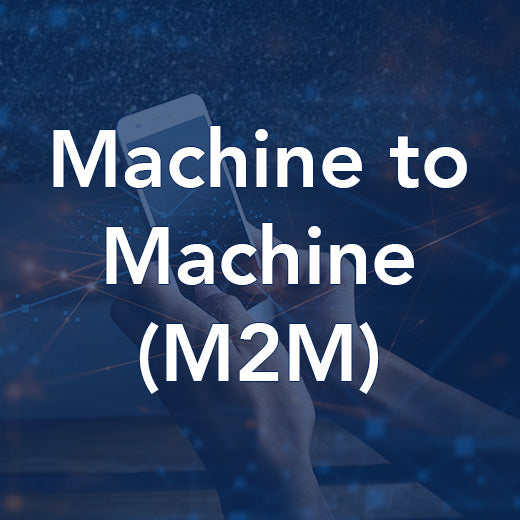
Machine to Machine (M2M)
This course covers the following topics: Overview of M2M; Architecture of M2M; M2M Applications; M2M Networks and Communication Technologies; M2M Ecosystem; M2M Market and Business Dynamics; M2M Security; M2M Standardization and Regulatory Issues; M2M Challenges and Issues and M2M Applications and Case Studies. Machine Type Communications for LTE is a crucial training course designed to provide participants with a comprehensive understanding of LTE technologies for the Internet of Things (IoT). Participants will be introduced to LTE and the Internet of Things, gaining insights into the latest advancements and applications in machine type communications. The course covers essential topics such as LTE technologies for the IoT, equipping attendees with the necessary expertise to navigate the complexities of this cutting-edge technology. By enrolling in this training course, participants can stay ahead of the curve and gain a competitive edge in the dynamic world of LTE and machine type communications. Whether you are a seasoned professional or new to the field, this course offers valuable insights and practical knowledge to help you succeed in your career. Who would benefit This course is designed for telecoms professionals who are involved in the planning, design, implementation, operations and management of M2M networks. This course is built in accordance with ETSI/3GPP, OMA and the Internet of Things Architecture (IOT- A) and so is primarily aimed at cellular implementations of M2M. Prerequisites This course comprehensively covers the main topic areas of M2M and as such there are no real prerequisites although a good understanding of telecoms networks and IP routing would be beneficial. Topic Areas Include Introduction to M2M M2M Applications M2M Standardization M2M Protocols and Networking Technologies M2M Security Cellular M2M M2M Challenges and Issues M2M Ecosystem and Market
POA: Private Course
-
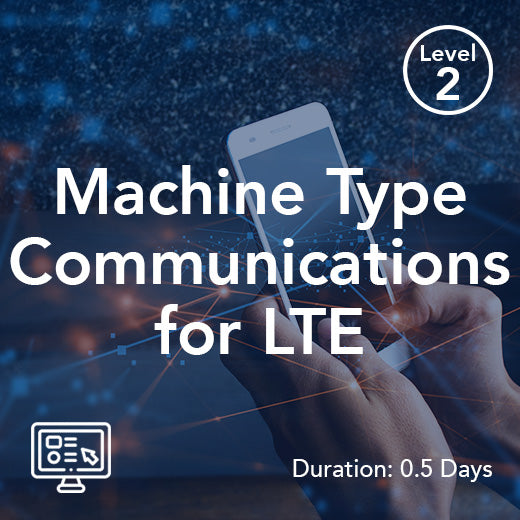
Machine Type Communications for LTE
Machine Type Communications for LTE is a crucial training course designed to provide participants with a comprehensive understanding of LTE technologies for the Internet of Things (IoT). Participants will be introduced to LTE and the Internet of Things, gaining insights into the latest advancements and applications in machine type communications. The course covers essential topics such as LTE technologies for the IoT, equipping attendees with the necessary expertise to navigate the complexities of this cutting-edge technology. By enrolling in this training course, participants can stay ahead of the curve and gain a competitive edge in the dynamic world of LTE and machine type communications. Whether you are a seasoned professional or new to the field, this course offers valuable insights and practical knowledge to help you succeed in your career. Course Contents Introduction to LTE and the Internet of Things (IoT) LTE Technologies for the IoT
POA: Private Course
-
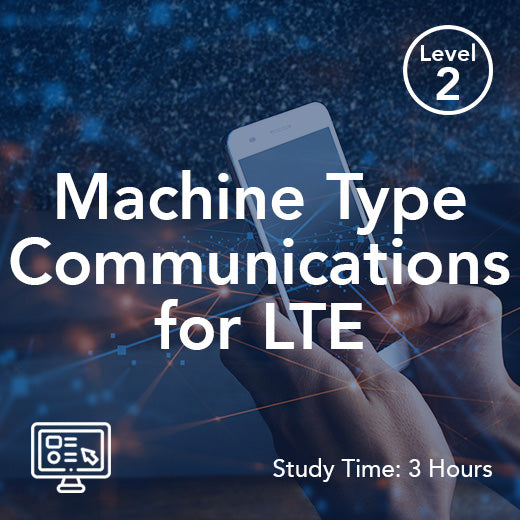
Machine Type Communications for LTE (On-Demand)
Mobile communication systems were originally designed to support voice (with SMS), but then focused primarily on developing data connectivity. With broadband connectivity representing the major areas of opportunity, networks were standardised, deployed and optimised to fully support that [fairly narrow] set of use cases. More recently, machine to machine communication, the Internet of Things (IoT) and connected innovation have seen massive growth, and become a much bigger part of the communications industry. However, the data connectivity requirements are very different to that of broadband. In order to optimally support this type of data, a number of modifications, new features, and complimentary technologies have been introduced to the networks. In LTE, these are grouped under the term Machine Type Communications (MTC). This course explores the technical aspects of MTC for LTE, and includes an examination of NB-IoT (Narrowband IoT) as a complimentary technology. Initially, the course provides an overview of IoT and low power networking / connectivity systems, and highlights the role and requirements of LTE for MTC. We then look at the features and performance of the different categories of MTC UE (User Equipment), the Air Interface modifications and features, and the Cellular IoT (C-IoT) enhancements to the Evolved Packet Core (EPC). Course Modules Introduction to LTE and the Internet of Things (IoT) LTE Technologies for the IoT NB-IoT and IoT Core Network Enhancements
£95.00
-
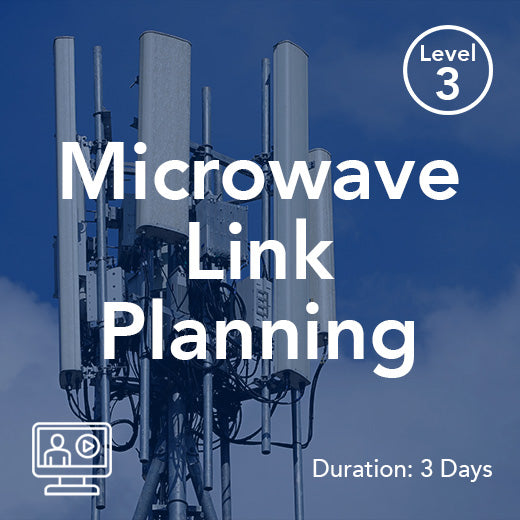
Microwave Link Planning
Course Code: RP1601 The course covers all of the essential aspects of planning point-to-point microwave link systems, from conception to commissioning. Who would benefit Those involved in the specification, planning and maintenance of fixed microwave radio transmission, backhaul and access links. Prerequisites A good knowledge of radio principles, or a background in telecommunications engineering, or attendance on the Radio Principles course (RP1301). Topic Areas Include ITU-R and CEPT recommendations ETSI standards Spectrum management and channel plans Frequency assignment Digital radio performance characteristics Noise and interference in radio systems Reliability, availability and performance objectives Microwave antennas and feeders Radiation Pattern Envelopes (RPEs) Refraction, k-factor, reflection and diffraction Path profiling and Fresnel zone clearance Power budgets Rain and Multipath/Dispersive fade margins Dimensioning space and frequency diversity Interference management Practical link planning exercises Practical exercises, including design of a fixed link transmission network. Trainer: Karl van Heeswijk Karl is an experienced training specialist in radio theory, point-to-point, point-to-multipoint and mobile systems.
POA: Private Course
-
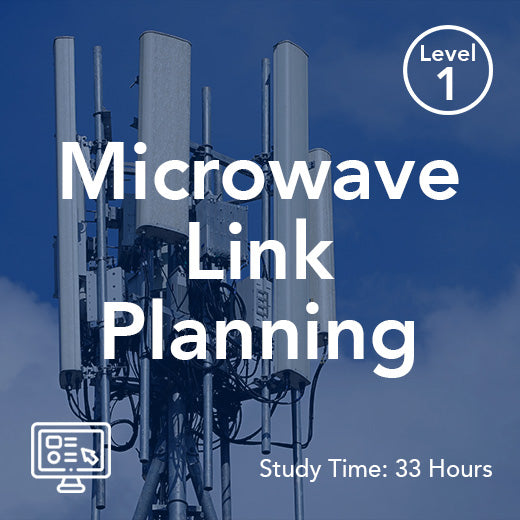
Microwave Link Planning (On-Demand)
The course covers all of the essential aspects of planning point-to-point microwave link systems, from conception to commissioning. Who would benefit Those involved in the specification, planning and maintenance of fixed microwave radio transmission, backhaul and access links. Prerequisites A good knowledge of radio principles, or a background in telecommunications engineering, or attendance on the Radio Principles course (RP1301). Topic Areas Include ITU-R and CEPT recommendations ETSI standards Spectrum management and channel plans Frequency assignment Digital radio performance characteristics Noise and interference in radio systems Reliability, availability and performance objectives Microwave antennas and feeders Radiation Pattern Envelopes (RPEs) Refraction, k-factor, reflection and diffraction Path profiling and Fresnel zone clearance Power budgets Rain and Multipath/Dispersive fade margins Dimensioning space and frequency diversity Interference management Practical link planning exercises Practical exercises, including design of a fixed link transmission network. On-Demand Online Training Our self-paced on-demand distance learning programmes are accessible on any computer, tablet or smartphone and allow you to study at a time and location that is convenient to you. Each course includes: Illustrated Course Books - featuring leading edge knowledge from subject matter experts. Videos - Detailed videos expand the points covered in the course books, discussing topics in greater depth. Tutor Support – Dedicated course tutors are available to answer any questions you might have throughout your studies. Formative Assessment - Modules include regular quizzes to support learning by testing your knowledge of the subject matter. Certification– Successfully complete the end of module tests to earn Digital Badges to demonstrate the depth of your knowledge of the topic. Also available as a Live Online Training, Learn more
£2,660.00
-
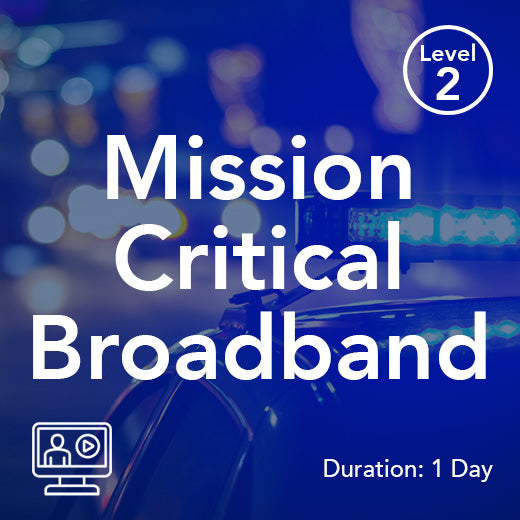
Mission Critical Broadband (MCB)
Understanding where we've come from, and where we're headed – A Primer The hottest topics in the Land Mobile Radio (LMR) market today is the use of LTE/4G/5G as the LMR market is heading for a major change in the delivery of information to and from their mobile portable and in-vehicle devices in the field. As the world embraces 4G/LTE and 5G mobile broadband technologies a shift in culture from voice-centric to information-centric operations - the options and therefore complexity expands exponentially. This course provides fundamental supplier independent knowledge about LMR, the evolving Broadband technologies and its specific features in Mission Critical Communications. Module 1: Overview Of Commercial & Mission Critical Networks The aim of this module is to introduce the broad functional similarities of Commercial and MCC networks whilst explaining the distinct differences in the requirements of the respective user populations. Mission Critical Networks & Commercial Mobile Broadband Networks Mobile Broadband Network Technologies LMR Mission Critical Network Technologies Module 2: Mission Critical Broadband & Interworking The aim of this module is to explain the changes made to the LTE standards to allow the realization of a Mission Critical Mobile Broadband technology, and explains the deployment options available to users. Spectrum Security Mission Critical Mobile Broadband Who would benefit? Those working with Private and Professional Mobile Communications wishing to become familiar with Broadband LTE 4G, 5G technologies and the services it can provide along with an appreciation of how Broadband networks can interwork with existing LMR technologies, such as TETRA, P25, DMR and Analogue systems.
POA: Private Course
-
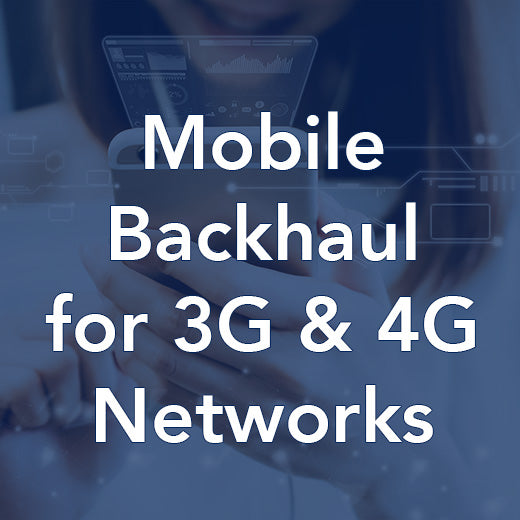
Mobile Backhaul for 3G and 4G Networks
Our 2-day Mobile Backhaul for 3G and 4G Networks training course offers a comprehensive overview of the technologies essential for supporting the backhaul requirements of evolved 3G HSPA and next-generation 4G LTE access networks. Participants will delve into discussions on backhaul architecture, Carrier Ethernet, MPLS, fibre-optic transmission, packet-based microwave, and other high-capacity backhaul technologies. This course is ideal for engineering and technical management professionals involved in the commissioning, design, deployment, or operation of mobile backhaul networks. Participants will gain insights into backhaul concepts, transport network layered architectures, RAN architectures and requirements, industry forums, and various backhaul options at layers 1, 2, and 3. Topics covered include Ethernet, VLANs, Q-in-Q VLAN stacking, MPLS, IP RAN in HSPA and LTE, synchronization, redundancy, security options, NGMN models, and VLAN traffic forwarding examples for Ethernet-based RANs. Prior knowledge of mobile network architecture and legacy backhaul technologies like TDM or ATM would be beneficial for this course. Join us for a deep dive into mobile backhaul technologies and enhance your expertise in supporting advanced mobile networks. Who would benefit This course is suitable for engineering and technical management staff who are involved in the commissioning, design, deployment or operation of mobile backhaul networks. Prerequisites An understanding of mobile network architecture and operation would be beneficial as would an appreciation of legacy backhaul technologies such as TDM or ATM. Topic Areas Include What is backhaul? Transport network layered architectures Radio Access Network (RAN) architectures and requirements Industry forums Layer 1 backhaul options Backhaul architecture models Next generation SDH, OTN and packet-based microwave Layer 2 backhaul options Ethernet and 802.1Q VLANs Q-in-Q VLAN stacking Carrier Ethernet MPLS and pseudowires Layer 3 backhaul options IP RAN in HSPA and LTE Synchronization (NTPv4, IEEE1588v2/PTP, Sync-E) Redundancy (MSTP, G.8031/8032) Security options (IPsec, Security Gateway) Next Generation Mobile Network (NGMN) models VLAN traffic forwarding examples for Ethernet-based RANs
POA: Private Course
-
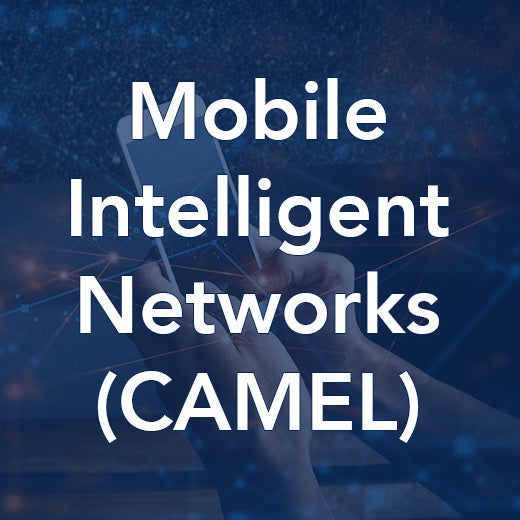
Mobile Intelligent Networks (CAMEL)
Our Mobile Intelligent Networks CAMEL Training Course (Course Code: MB90) is designed to provide an in-depth understanding of Intelligent Network (IN) concepts, specifically focusing on IN Capability Set 1 (IN-CS1) and its interworking with CAMEL and mobile networks. This course covers a range of topics including Basic Call State Models (BCSM), Detection Points (DP) types and arming, CAMEL Phases 1, 2, and 3 features, operation and procedures, as well as CAMEL interaction with both circuit-switched (CS) and packet-switched (PS) mobile networks. Ideal for individuals looking to implement value-added services within mobile networks using CAMEL technology, this course requires participants to have a good understanding of technical language and concepts, as well as a solid knowledge of GSM operation. Familiarity with SS7 is also beneficial for a comprehensive learning experience. Expand your expertise in Intelligent Network concepts and CAMEL technology with our comprehensive training course. Gain insights into CAMEL Information Flows, charging functions, pre-paid solutions, real-time charging, and analysis of CAMEL signalling. Whether you are a telecom professional looking to advance your career or a company seeking to implement innovative services in mobile networks, this course will equip you with the necessary skills and knowledge to succeed in the dynamic world of mobile intelligent networks. Who would benefit Those needing to know how value-added services can be implemented within mobile networks using CAMEL technology. Prerequisites An ability to understand technical language and concepts, and a good knowledge of GSM operation. Knowledge of SS7 is also beneficial. Topic Areas Include Intelligent Network Concepts Intelligent Network – Capability Set 1 Basic Call State Models (BCSM) Detection Points (DP) types and arming CAMEL Phases 1, 2 and 3 features, operation and procedures BCSMs, DPs and CAMEL Subscription Information CAMEL Information Flows CAMEL Interaction with CS and PS mobile networks CAMEL Interaction with CS and PS mobile networks Charging functions Pre-paid solutions and real-time charging Analysis of CAMEL signalling
POA: Private Course
-
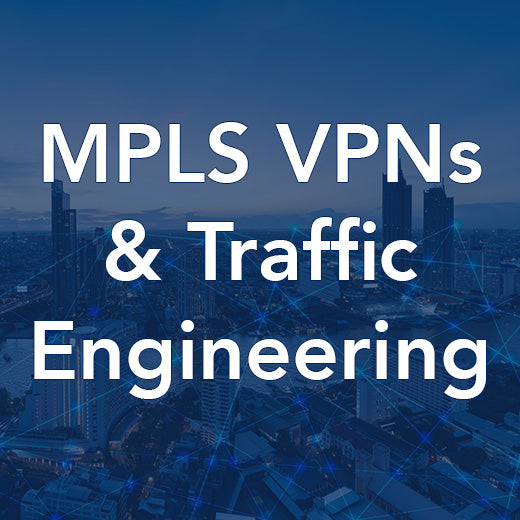
MPLS VPNs and Traffic Engineering
This 2-day MPLS VPNs and Traffic Engineering training course offered by Wray Castle provides a practical and in-depth look at Multi Protocol Label Switching (MPLS) technology. From understanding Label Switched Paths to configuring Virtual Private Network (VPN) connections and exploring MPLS Traffic Engineering, this course covers all the essential aspects of MPLS implementation in networks. Engineers who work with MPLS VPNs or Traffic Engineering services will greatly benefit from this course, gaining a comprehensive understanding of how MPLS is configured and operated in real-world networks. Participants are required to have a good grounding in MPLS and VPN principles, which can be obtained by attending Wray Castle's course on 'Multi Protocol Label Switching'. Topics covered in this course include VPN (Virtual Private Networks), MPLS VPN operation, MP-BGP configuration, building different VPN types using route targets, MPLS traffic engineering, MPLS-TE trunk attributes, and fast restoration of an LSP using RSVP-TE. By the end of the training, participants will have the knowledge and skills to effectively configure and manage MPLS VPNs and Traffic Engineering in their networks. Who would benefit Engineers who would benefit from a practical understanding of how MPLS is configured in networks. Especially those that have to work with MPLS VPNs or Traffic Engineering services. Prerequisites A good grounding in MPLS and VPN principles as obtained by attending our Wray Castle course ‘Multi Protocol Label Switching – IP1307’. Topic Areas Include VPN (Virtual Private Networks) MPLS-based IP-VPN motivation MPLS VPN operation Configuration of VPN sites MP-BGP configuration MP-BGP updates Building different VPN types using route targets Route reflector MPLS traffic engineering MPLS-TE trunk attributes MPLS-TE basic operations Fast restoration of an LSP using RSVP-TE
POA: Private Course
-
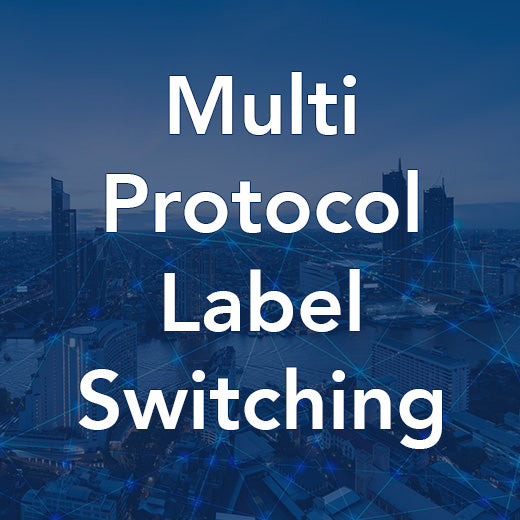
Multi Protocol Label Switching
Our Multi Protocol Label Switching (MPLS) training course is designed to provide a comprehensive introduction to MPLS, covering topics such as MPLS Label Switched Paths (LSPs) and MPLS Virtual Private Network (VPN) connections. This 1-day course is ideal for engineers working with MPLS in various applications, from IP VPNs to GMPLS in transmission networks. Participants will gain a solid understanding of MPLS, including its motivation, applications, packet forwarding, and architecture of MPLS-based IP-VPNs. The course also covers topics such as Forward Equivalence Class (FEC), MPLS label operations, Label Distribution Protocol (LDP), Virtual Private Networks (VPN), and MP-BGP configuration. Prerequisites for this course include a good understanding of IP networking and familiarity with OSPF and BGP, which can be obtained by attending our ‘Routing Protocol Principles – IP1306’ course. Join us for this interactive training session to enhance your knowledge and skills in Multi Protocol Label Switching. Who would benefit Engineers are finding MPLS is a variety of different applications from IP VPNs, through to GMPLS in transmission networks. As so this 1-day course will provide an excellent introduction to the topic. Prerequisites A good understanding of IP networking is essential as well as an understanding of OSPF and BGP which can be obtained from attending our ‘Routing Protocol Principles – IP1306’ course. Topic Areas Include Motivation for MPLS MPLS applications view MPLS packet forwarding Architecture of MPLS-based IP-VPNs Forward Equivalence Class (FEC) MPLS label operations Special case labels Label Distribution Protocol (LDP) Virtual Private Networks (VPN) MP-BGP configuration
POA: Private Course
-
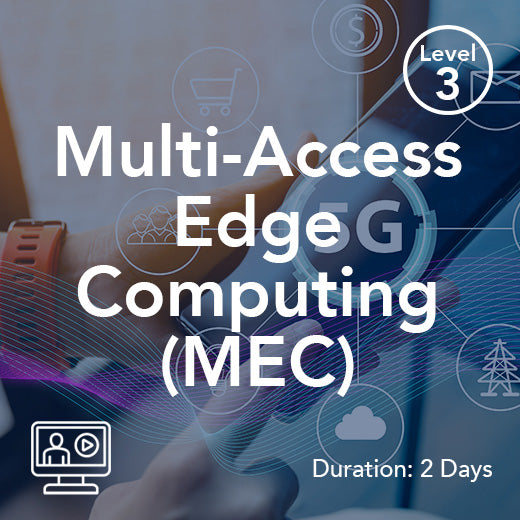
Multi-Access Edge Computing (MEC)
Multi-Access Edge Computing (MEC) is a cutting-edge technology that brings computation and data storage closer to the end-users, enabling faster processing and reduced latency. Our MEC training course dives deep into the MEC architecture, enabling technologies such as Cloud, NFV, and 4G/5G, and explores real-world MEC use cases. Led by industry expert John Timms, this course provides a comprehensive overview of MEC standards and APIs, as well as hands-on experience in developing MEC applications and services. With a focus on practical applications and collaborative methods, participants will gain valuable insights into building MEC solutions and conducting proof of concept studies. Whether you are new to MEC or looking to enhance your existing knowledge, this 2-day online training course is designed to equip you with the skills and expertise needed to succeed in the rapidly evolving field of Multi-Access Edge Computing. Don't miss this opportunity to learn from a seasoned professional and take your MEC knowledge to the next level. Topic Areas Include Introduction Enabling Technologies (Cloud and NFV) Enabling Technologies (4G/5G) MEC Architecture Use Cases MEC standards and APIs Annex A Detailed Use Case Study Speaker: John Timms John Timms is an experienced trainer in IP, VoIP, IPTV, NFV/SDN and IMS/LTE Core. John is also a former Telemanagement Forum Subject Matter Expert and specialist in QoE for VoIP/VoLTE and IP video services.
£1,815.00
-

Network Functions Virtualisation (NFV)
This course is for network engineers who require a practical understanding of Network Functions Virtualisation (NFV). The course reviews the current NFV situation, introduces the leading bodies defining the standards and discusses the likely fields of application by examining use cases and existing Proof of Concepts (POCs). It discusses NFV from ETSI’s perspective, particularly in light of mobile operators’ intent to virtualise their IMS networks, as well as looking at how NFV relates to other techniques such as Cloud Computing and Software Defined Networking (SDN). Network Functions Virtualisation (NFV) is a crucial technology for network engineers looking to stay ahead in the rapidly evolving telecommunications industry. Our 2-day NFV Engineering Training Course is designed to provide a practical understanding of NFV, covering everything from the current NFV landscape to the standards set by leading bodies. Through a series of live online sessions, participants will explore real-world use cases, Proof of Concepts (POCs), and the relationship between NFV, Cloud Computing, and Software Defined Networking (SDN). This course is ideal for network, software, and IT engineers, as well as managers and consultants who need to grasp the deployment considerations associated with NFV. Participants should have a basic understanding of IP networking and routing, with some familiarity with modern telecommunications networks. Topics covered include NFV Functional Architecture, NFV Infrastructure (NFVI), NFV Management and Orchestration (MANO), SDN and NFV integration, and ETSI Proof of Concept Projects. Don't miss this opportunity to enhance your skills and stay competitive in the dynamic world of NFV engineering. Who would benefit This course is suitable for those who need an understanding of NFV and the deployment considerations associated with NFV; including network, software and IT engineers, as well as managers and consultants. Prerequisites Delegates should have experience or an understanding of the principles or IP networking and routing and preferably some understanding of modern telecommunication’s networks. Topic Areas Include Drivers for Change NFV Functional Architecture NFV Infrastructure (NFVI) NFV Management and Orchestration (MANO) Software Defined Networks (SDN) and NFV NFV ETSI Proof of Concept Projects
POA: Private Course
-
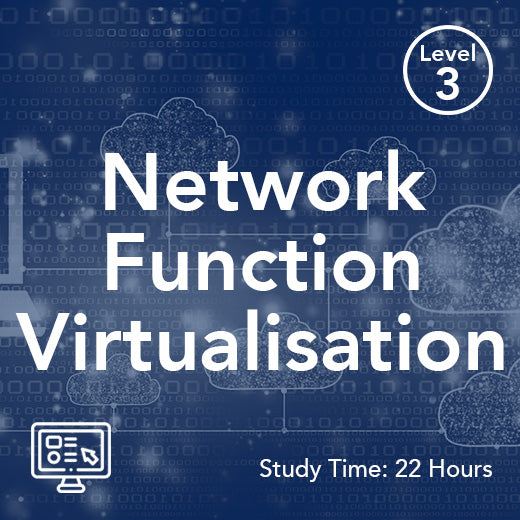
Network Functions Virtualisation (NFV) (On-Demand)
This course is for network engineers who require a practical understanding of Network Functions Virtualisation (NFV). The course reviews the current NFV situation, introduces the leading bodies defining the standards and discusses the likely fields of application by examining use cases and existing Proof of Concepts (POCs). It discusses NFV from ETSI’s perspective, particularly in light of mobile operators’ intent to virtualise their IMS networks, as well as looking at how NFV relates to other techniques such as Cloud Computing and Software Defined Networking (SDN). Network Functions Virtualisation (NFV) is a crucial technology for network engineers looking to stay ahead in the rapidly evolving telecommunications industry. Our 2-day NFV Engineering Training Course is designed to provide a practical understanding of NFV, covering everything from the current NFV landscape to the standards set by leading bodies. Through a series of live online sessions, participants will explore real-world use cases, Proof of Concepts (POCs), and the relationship between NFV, Cloud Computing, and Software Defined Networking (SDN). This course is ideal for network, software, and IT engineers, as well as managers and consultants who need to grasp the deployment considerations associated with NFV. Participants should have a basic understanding of IP networking and routing, with some familiarity with modern telecommunications networks. Topics covered include NFV Functional Architecture, NFV Infrastructure (NFVI), NFV Management and Orchestration (MANO), SDN and NFV integration, and ETSI Proof of Concept Projects. Don't miss this opportunity to enhance your skills and stay competitive in the dynamic world of NFV engineering. Who would benefit This course is suitable for those who need an understanding of NFV and the deployment considerations associated with NFV; including network, software and IT engineers, as well as managers and consultants. Prerequisites Delegates should have experience or an understanding of the principles or IP networking and routing and preferably some understanding of modern telecommunication’s networks. Topic Areas Include Drivers for Change NFV Functional Architecture NFV Infrastructure (NFVI) NFV Management and Orchestration (MANO) Software Defined Networks (SDN) and NFV NFV ETSI Proof of Concept Project
£950.00
-

Next Generation Transmission
Course Code: TY2702 Course Summary This 3-day course reviews traditional approaches to transport services such as SDH and WDM and also discusses in detail alternative approaches including Carrier Ethernet and Pseudo Wire services that may be deployed in backhaul and core network applications. Who would benefit Transmission and network engineers who require an insight into modern digital transmission techniques used within fixed and mobile telecommunications networks. Prerequisites A good knowledge of fixed or mobile network transmission and switching architecture, services and applications and some knowledge of packet-switched networks and IP routing protocols. Topic Areas Include Introduction to transport networks Layer 2 virtual circuits – MPLS MPLS based VPNs MEF terminology for Carrier Ethernet Services Provider Bridge networks and Ethernet label-switching PBB service multiplexing Ethernet OAM – Connection Fault and Performance Management SDH Transport Networks SDH Multiplexing Structure and Protection Mechanisms Next Generation SDH review Wave Division Multiplexing (WDM) The Optical Transport Network, principles, multiplexing structures and operation MPLS in optical Networks, GMPLS and ASON Pseudo Wire (PW) principles, encapsulation and the control word Pseudo Wire types, IETF MPLS and TDM based PWs MPLS VLAN-to-VLAN and VPLS service examples
POA: Private Course
-
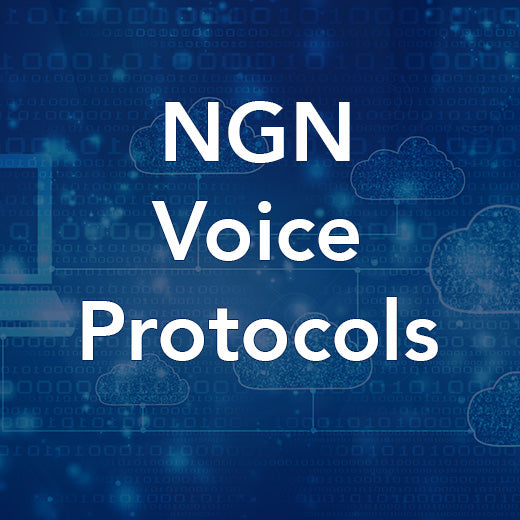
NGN Voice Protocols
Course Code: TY1202 Course Summary This course is intended for experienced telecoms engineers that wish to understand the workings of the protocols that are commonly used within Next Generation Networks (NGNs). The course takes a detailed look at real time signalling and transport protocols; it also looks at the protocols used to support legacy devices in the access and core network signalling such as POTS, ISDN and SS7. The course also looks in detail at the protocols supporting the new gateway devices. The course is backed up by an extensive set of exercises and the use of Wireshark. Who would benefit Those requiring a comprehensive understanding of the protocols used in an NGN for the support of voice services. Prerequisites A good understanding of legacy telecommunications networks, plus an understanding of IP networks and signal flows used in support of voice-related services. Topic Areas Include IP convergence Telecoms convergence and NGNs Telecoms (IP) scenarios Real time protocols SIP, RTP and RTCP H.323 call scenario The 3GPP IP Multimedia Subsystem The IMS registration process The IMS call signalling Softswitching architecture and protocols SIGTRAN in the access in support of POTS and ISDN SIGTRAN in the core in support of SS7 H.248 Megaco SIP-I Includes practical signalling exercises.
POA: Private Course
-

O-RAN in 5G (On-Demand)
As 5G networks become more open, intelligent, and disaggregated, understanding the Open Radio Access Network (O-RAN) is essential for professionals working in mobile network design, deployment, and optimisation. This short, single-module course provides a concise yet comprehensive introduction to O-RAN and its critical role in modern 5G networks. In just three hours, you’ll explore the key architectural and functional components that make O-RAN unique. The course begins with an overview of 3GPP architectural options and how they lay the foundation for NG-RAN deployments. You’ll then examine the principles of RAN functionality and protocols before diving into the detailed architecture of NG-RAN and O-RAN. You’ll gain a solid understanding of functional split options—crucial for enabling multi-vendor interoperability—as well as the differences between traditional and open RAN deployments. The course explains the high-level and logical architectures of O-RAN, including the roles of the Central Unit (CU), Distributed Unit (DU), and Radio Unit (RU), and how open interfaces and intelligent controllers reshape how networks are managed.Additional topics include the application of Artificial Intelligence and Machine Learning in O-RAN, the concept of the O-RAN white box, and critical considerations around fronthaul, backhaul, and interfaces like CPRI and eCPRI. Designed for technical professionals looking for a clear and accessible introduction to O-RAN, this course equips you with the essential knowledge needed to understand the future of radio access networks. Course Contents 3GPP RAN Architecture for 5G 3GPP Architectural Options RAN Functionality and Protocols NG-RAN Architecture Split Options O-RAN, O-RAN Operations and Maintenance High Level O-RAN Architecture Logical Architecture of O-RAN Artificial Intelligence and Machine Learning O-RAN White Box Backhaul CPRI and eCPRI
£95.00 £47.50
-

Open Radio Access Networks (Open RAN)
Open RAN is poised to revolutionize the Radio Access Networks (RAN) and the industry that supports it. The ORAN Alliance is paving the way for an open, intelligent, and fully interoperable architecture, aiming to foster a more competitive and innovative RAN supplier ecosystem. Telecom operators stand to benefit from Open RAN-compliant mobile networks, which enhance the efficiency and flexibility of RAN deployments and operations, crucial as networks transition through the phases of 5G deployment. Our Open RAN training course offers a comprehensive introduction to Open RAN, delving into its purpose, features, architecture, operation, and deployment options. Participants will also explore how Open RAN principles and its foundation in virtualization support the evolution to 5G, along with the impact of utilizing ORAN architecture on open and standardized interfaces. Ideal for individuals in technical roles within mobile network operators' Radio Access Network (RAN) environment, this course equips participants with the knowledge and skills needed to navigate the evolving landscape of Open RAN. A basic understanding of cellular radio networks from a radio network perspective is beneficial, as well as the ability to grasp technical subjects. Topics covered include Radio Access Networks, ORAN Players, 3GPP RAN Architecture for 5G, Open RAN Operations and Maintenance, and Whitebox Basestations. Join us for this two-day training course led by industry expert Les Granfield, a seasoned technical trainer with over 35 years of experience in various telecommunications technologies. Who would benefit Those in or entering technical roles in a mobile network operators Radio Access Network (RAN) environment. Prerequisites A basic understanding of cellular radio networks from a radio network perspective as well as the ability to comprehend technical subjects, would be useful. Topic Areas Include Radio Access Networks ORAN Players 3GPP RAN Architecture for 5G Open RAN, O-RAN Operations and Maintenance Whitebox Basestations Trainer: Les Granfield Les is a technical trainer with 35 years of experience. His expertise extends across a wide range of telecommunications technologies. He specializes in GSM, GSM-R, ERTMS/ETCS, UMTS and LTE radio access networks, radio planning, radio access network optimization and Push to Talk over Cellular (PoC).
POA: Private Course
-

Open-Source in Mobile Networks
Open-source solutions have revolutionized the way mobile networks are built and operated, with a strong influence from the open-source community. This technical course delves into the various open-source projects, standards, and commercial solutions that are utilized in live mobile networks. Participants will gain a comprehensive understanding of how open-source software is integrated into different aspects of mobile network architecture. Ideal for network engineers, system architects, operation and maintenance teams, network planners, and technical managers, this course is designed to enhance the knowledge and skills of professionals working in the mobile network industry. Prior knowledge of mobile networks, open-source principles, and programming is recommended, making it suitable for participants with varying technical backgrounds. Familiarity with network architecture, protocols, and operating systems is beneficial for getting the most out of this course. The course covers a range of topics including an introduction to open-source software and mobile networks, open-source solutions in the Radio Access Network (RAN), core network solutions, and the integration of Network Function Virtualization (NFV) with open-source technologies. By the end of the course, participants will have a solid understanding of how open-source solutions are shaping the future of mobile networks. Who Would Benefit? Network Engineers, System Architects, Operation and Maintenance Teams, Network Planners, Technical Managers, Prerequisites Prior knowledge of mobile networks, open-source principles, and programming is recommended. Familiarity with network architecture, protocols, and operating systems is beneficial. The course is suitable for participants with varying technical backgrounds and those interested in mobile networks and open-source solutions. Course Contents Introduction to Open-Source Software and Mobile Networks Open-Source Software in Radio Access Network (RAN) Open Source: Core Network Solutions Network Function Virtualization (NFV) and Open Source
POA: Private Course
-

OSPF and BGP Routing Protocols
In this 2-day OSPF and BGP Routing Protocols training course, engineers will gain a practical understanding of OSPF and BGP through hands-on configuration of routers and switches. Participants will also learn how to investigate databases and routing tables to optimize network performance. This course is ideal for engineers who are transitioning into IP networking and need to have a solid operational understanding of devices like Ethernet switches and IP routers. Participants should have a basic knowledge of Ethernet switching and routing principles, including OSPF, as well as a good grasp of IP addressing. If you need to brush up on these prerequisites, consider attending our Wray Castle courses on Internetworking, Ethernet LANs and VLANs Principles, IP Addressing and Internet Protocols Principles, and Routing Protocol Principles. Topics covered in this training include the purpose of routing, equal cost multi-path routing, OSPF areas and metrics, OSPF database management, troubleshooting OSPF, BGP version 4, BGP redistribution, BGP path attributes, BGP filtering, and troubleshooting BGP. Join us for this comprehensive course to enhance your skills in OSPF and BGP routing protocols. Who would benefit Engineers who are moving into IP and need to have an operational understanding of typical devices such as Ethernet Switches and IP routers. Prerequisites A basic understanding of Ethernet switching and basics of routing such as OSPF together with a good understanding of IP addressing which can be obtained by attending our Wray Castle courses: ‘Internetworking, Ethernet LANs and VLANs Principles – IP1304’ and ‘IP Addressing and Internet Protocols Principles – IP1305’ and ‘Routing Protocol Principles – IP1306’. Topic Areas Include The Purpose of Routing The Routing Table Equal Cost Multi Path Redistribution OSPF Areas OSPF Metrics OSPF Database Troubleshooting OSPF OSPF Exercises Border Gateway Protocol Version 4 (BGP4) BGP redistribution BGP Path Attributes BGP Filtering BGP Troubleshooting BGP Exercise
POA: Private Course
-

Packet Engineering for Cellular Mobile Networks
Course Code: MB1201 Course Summary This course provides an overview of the GPRS system beginning with an overall description of GPRS and progressing through its network architecture and operational aspects. The subsequent sections cover EDGE, the structure of the GPRS air interface and the basics of uplink and downlink packet transfer. Who would benefit Those already working in the GSM industry who require an overview of GPRS operation including its association with EDGE and how it interworks with 2.5G and 3G 3GPP based mobile networks. Prerequisites A good understanding of 3GPP’s GSM network, its architecture and operation would be beneficial together with an appreciation of packet-switching IP-based networks would be advantageous. Topic Areas Include GPRS network architecture The GPRS air interface and Dual Transfer Mode GPRS protocols Identities and addressing Mobility management and Dual Access Location management and Pooling Security and confidentiality Roaming Policy and Charging Content Access Controls The GERAN and Enhanced EDGE Packet-switched procedures 2.5G and 3G packet-switched interworking GPRS and IMS control GPRS and LTE interworking
POA: Private Course





























































